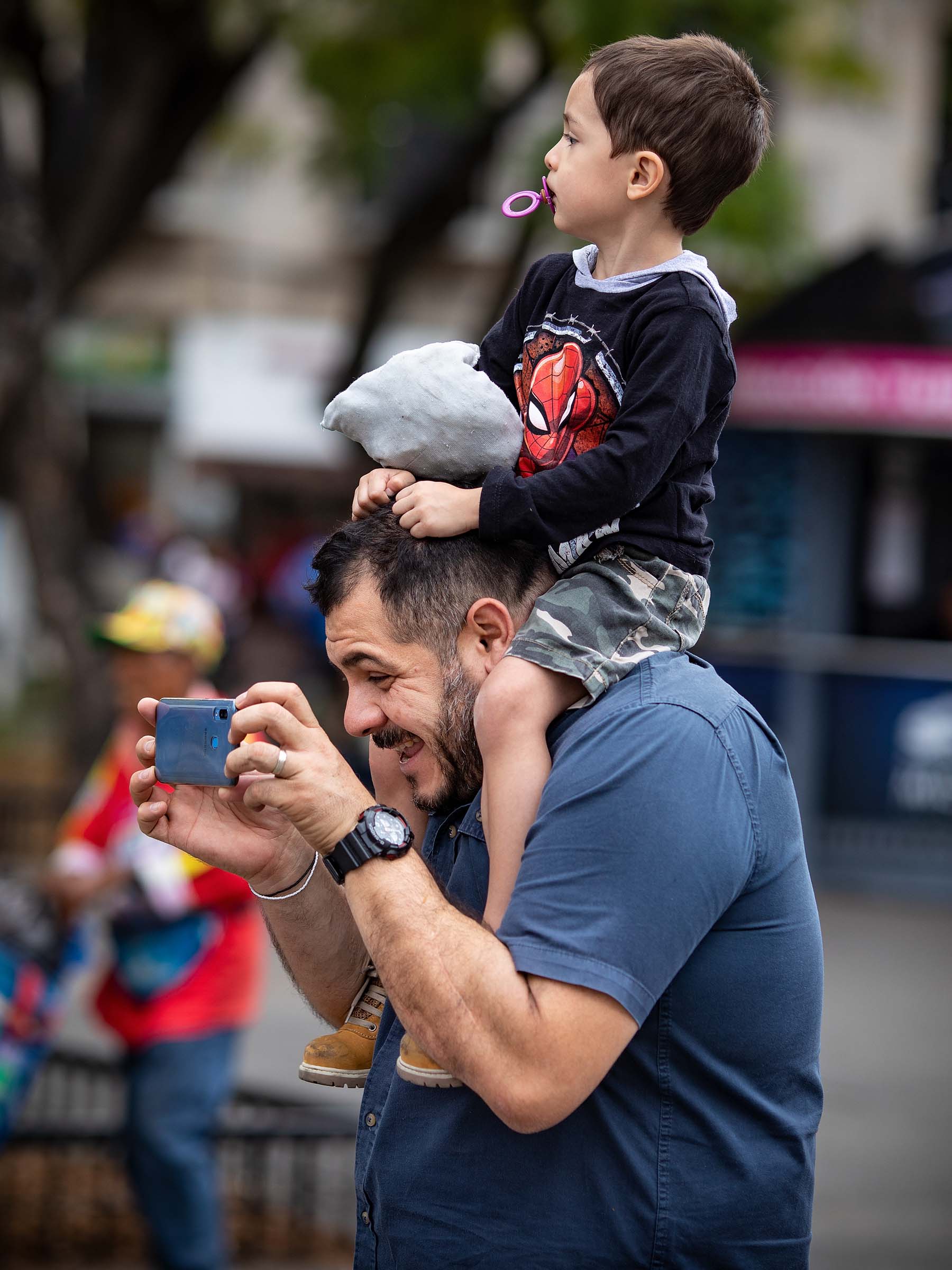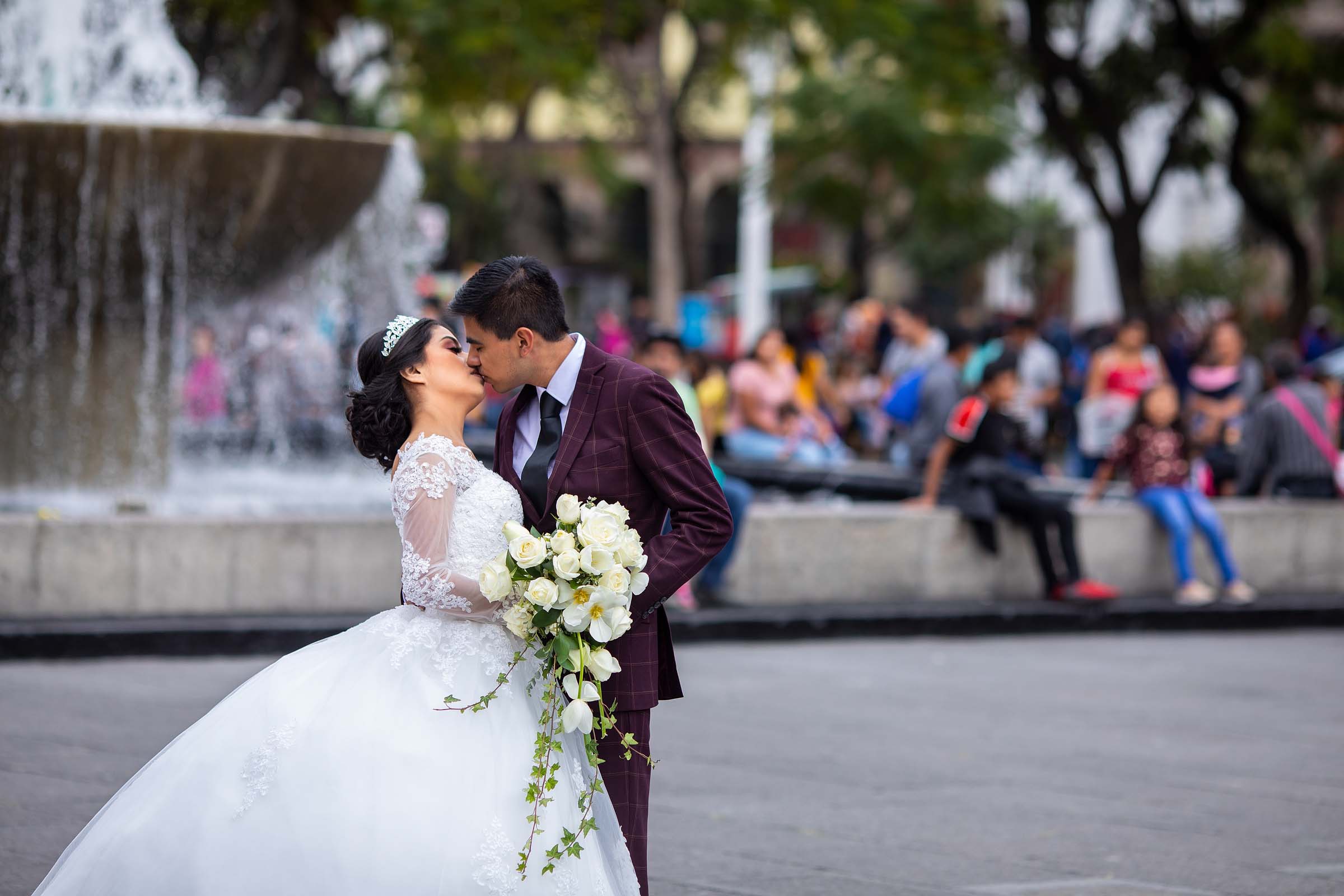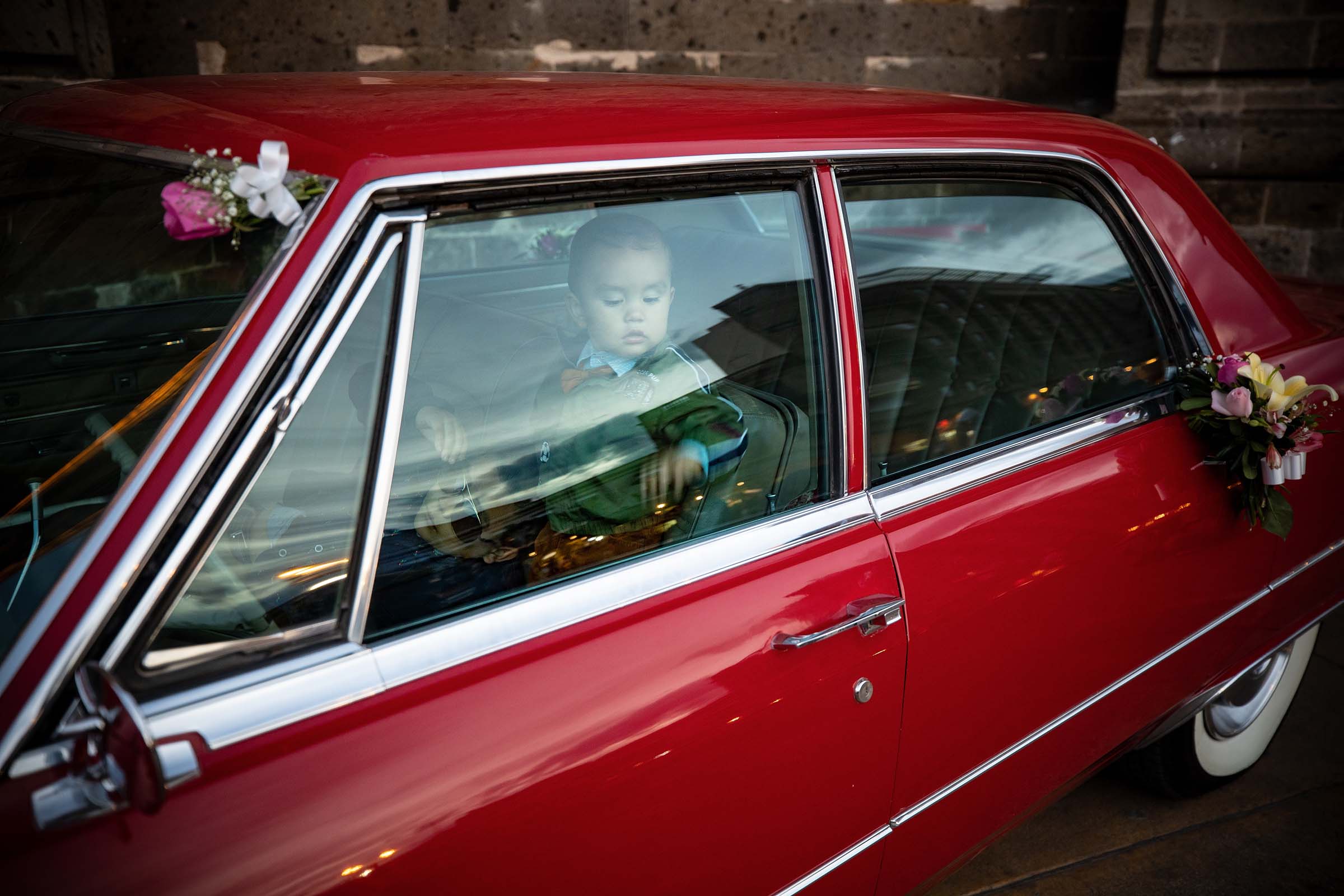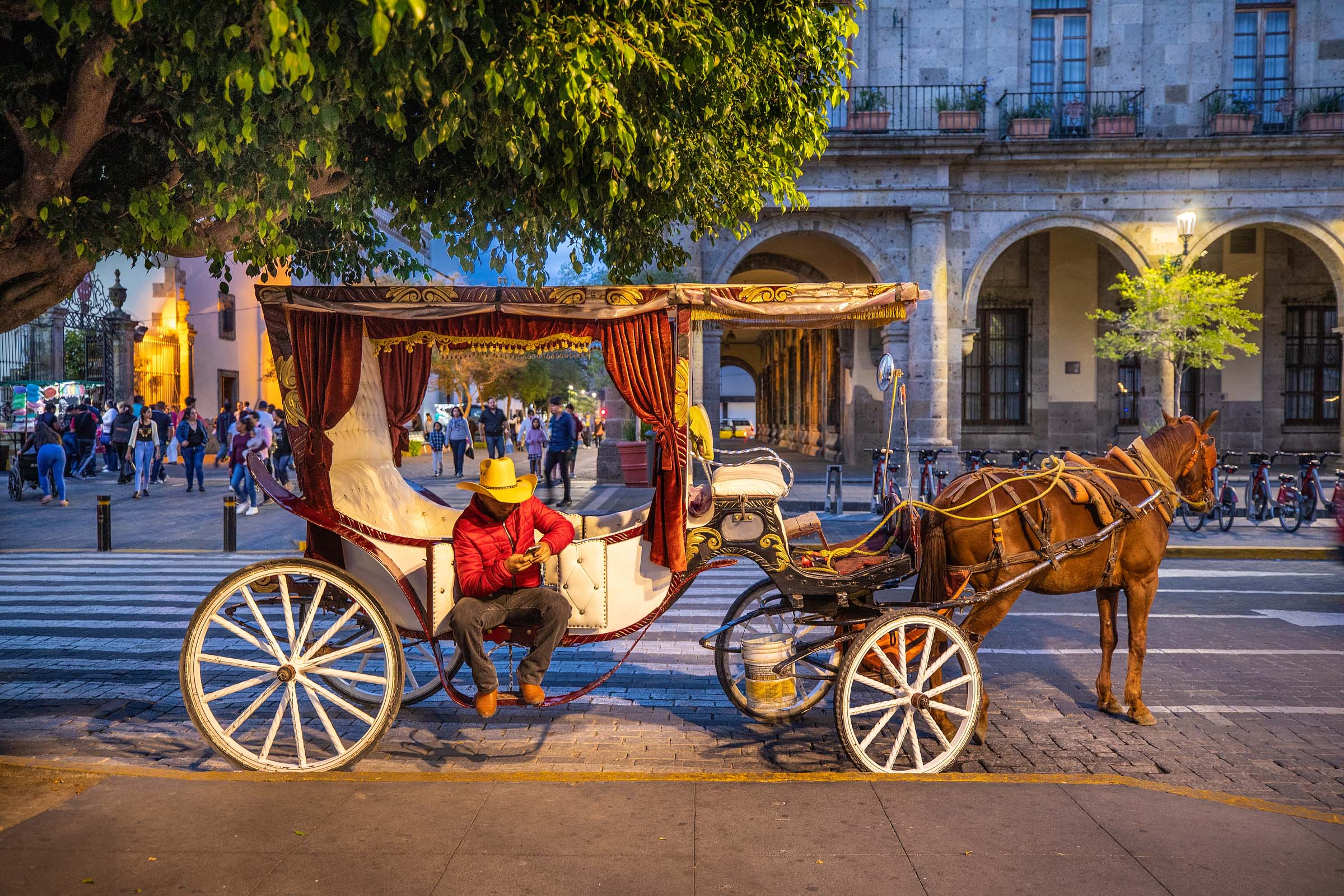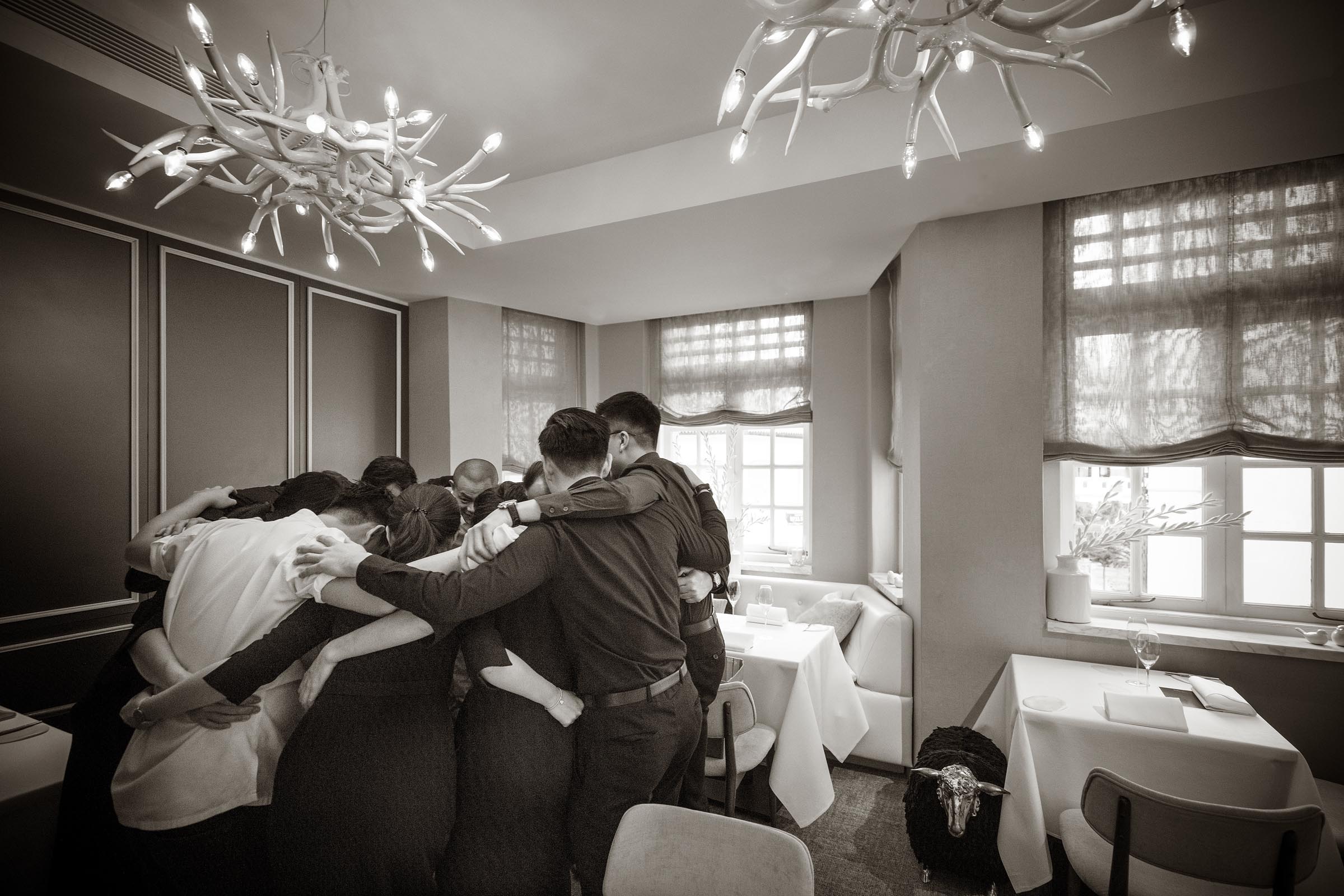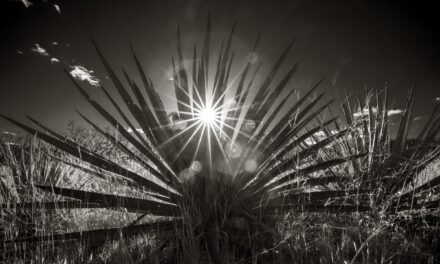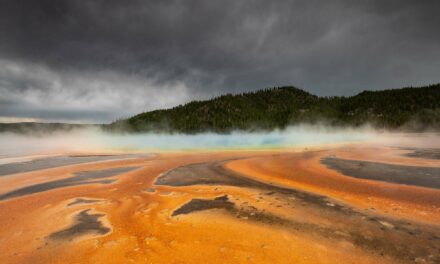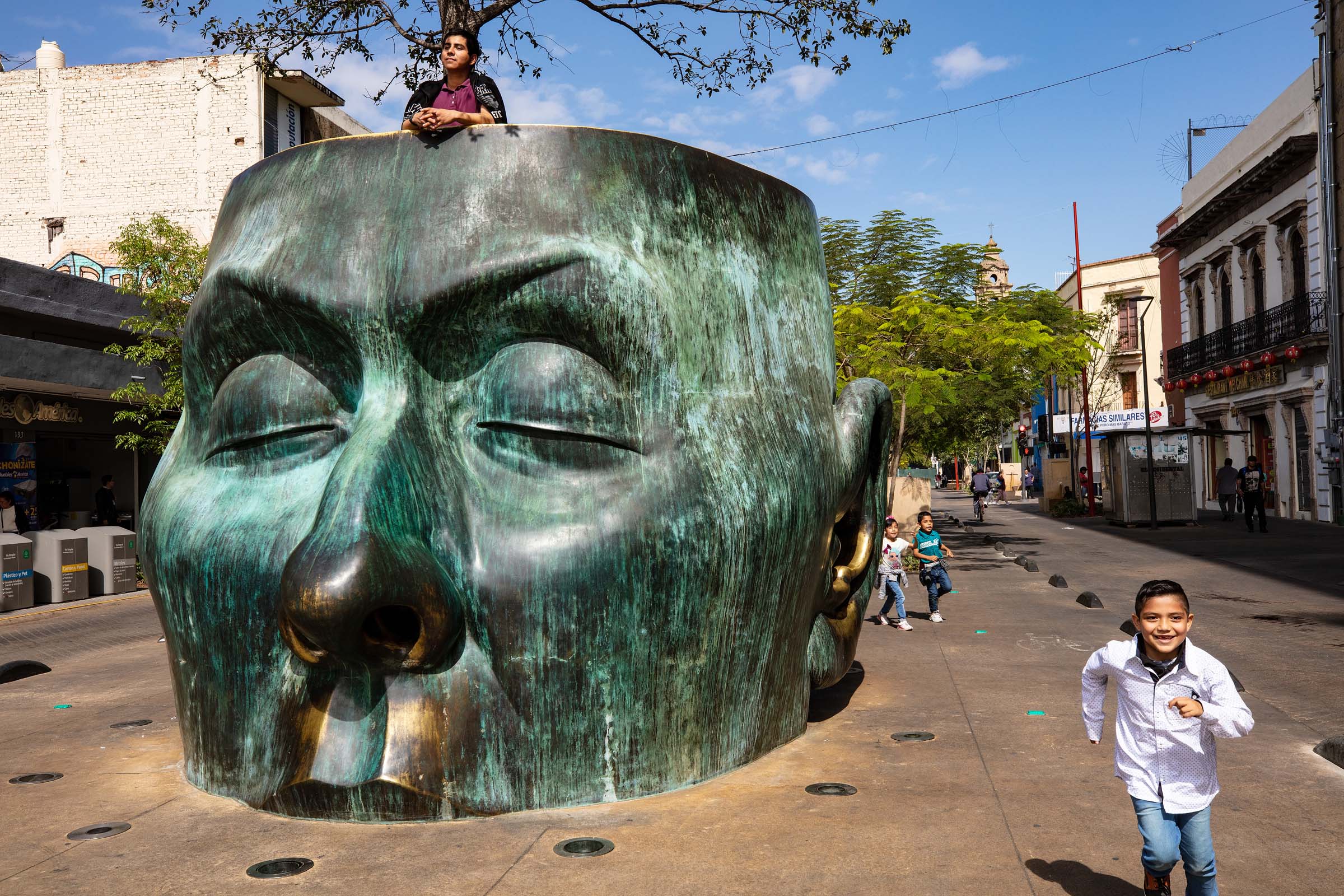
A typical Sunday in Guadalajara, Jalisco, Mexico
Jalisco days
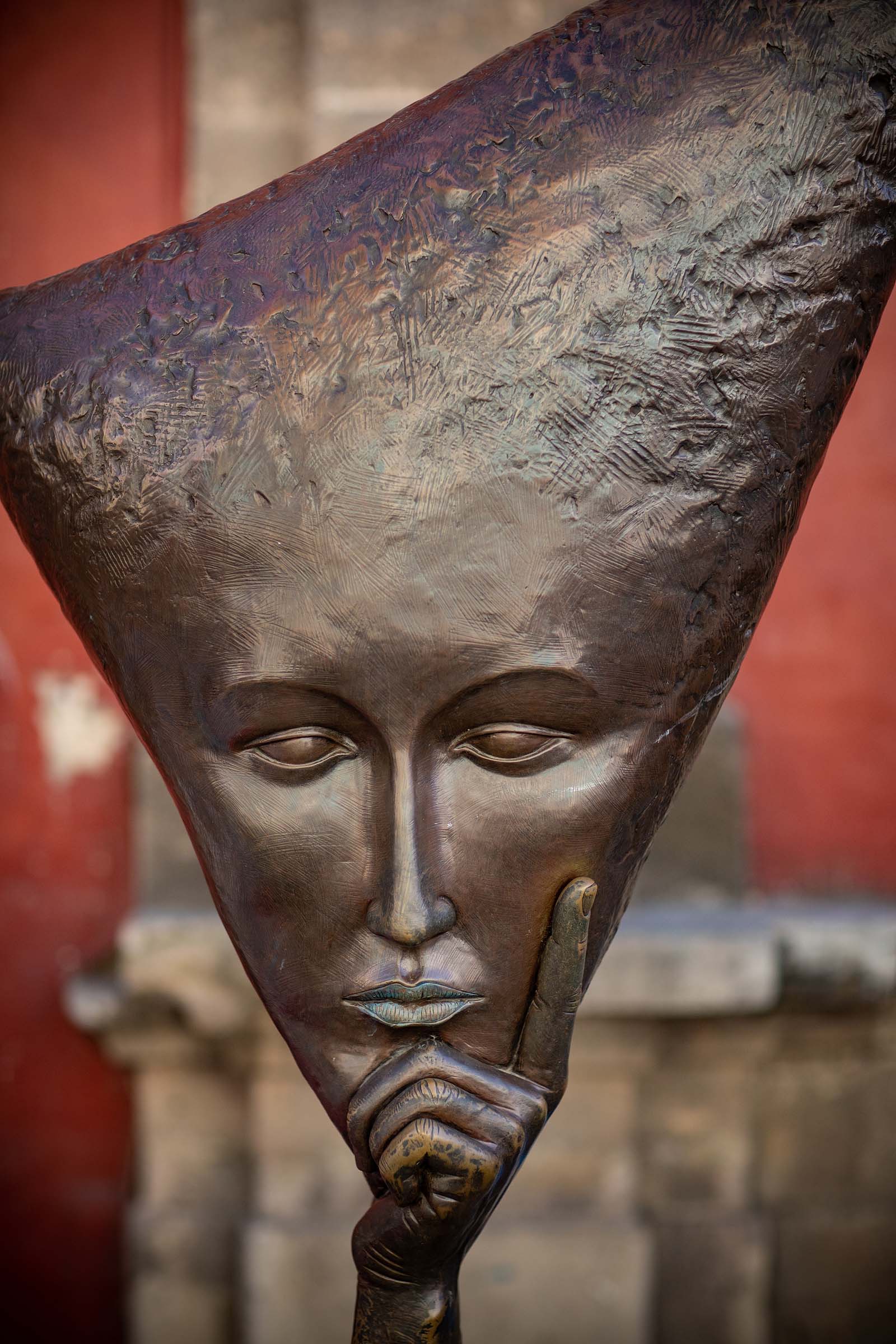
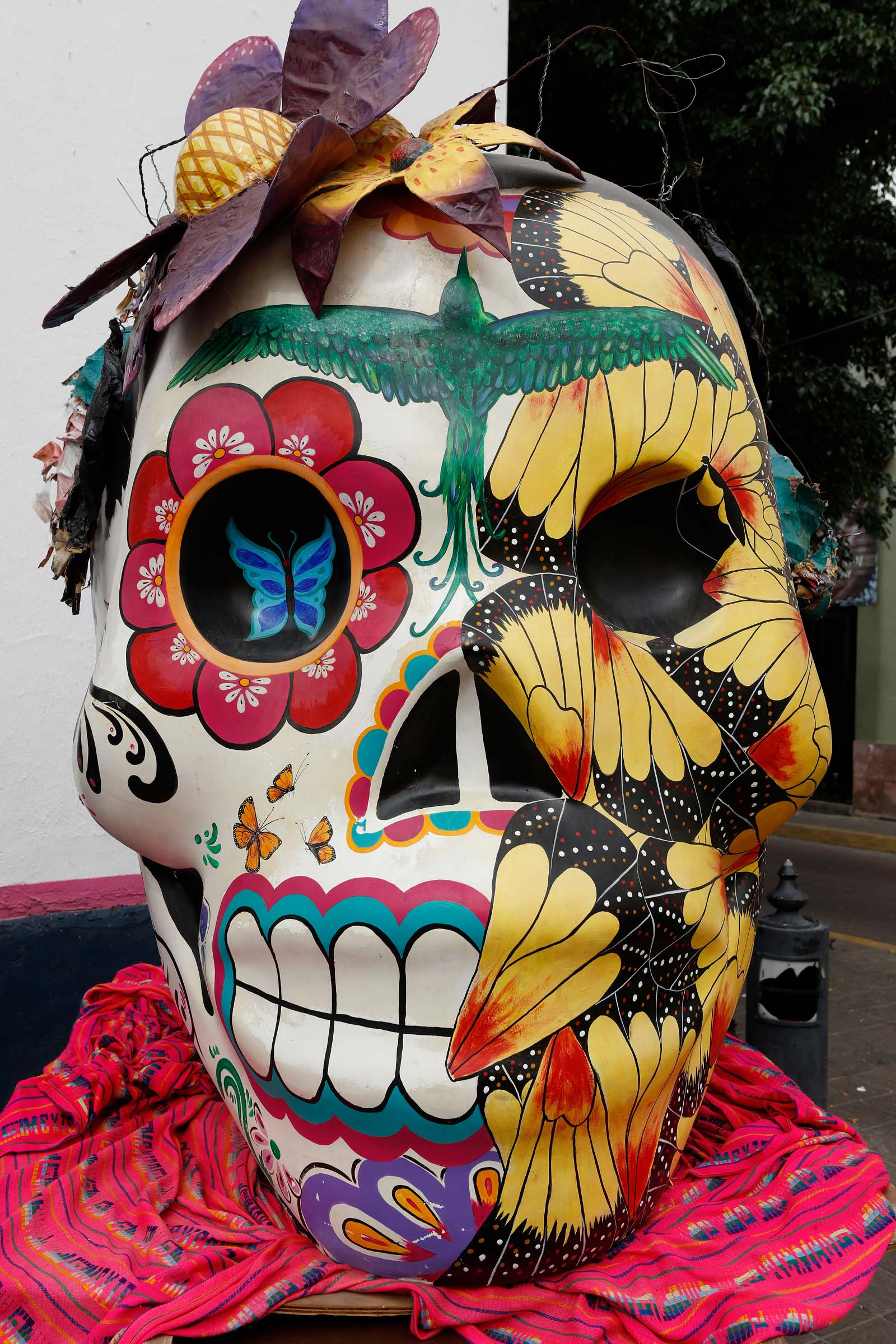
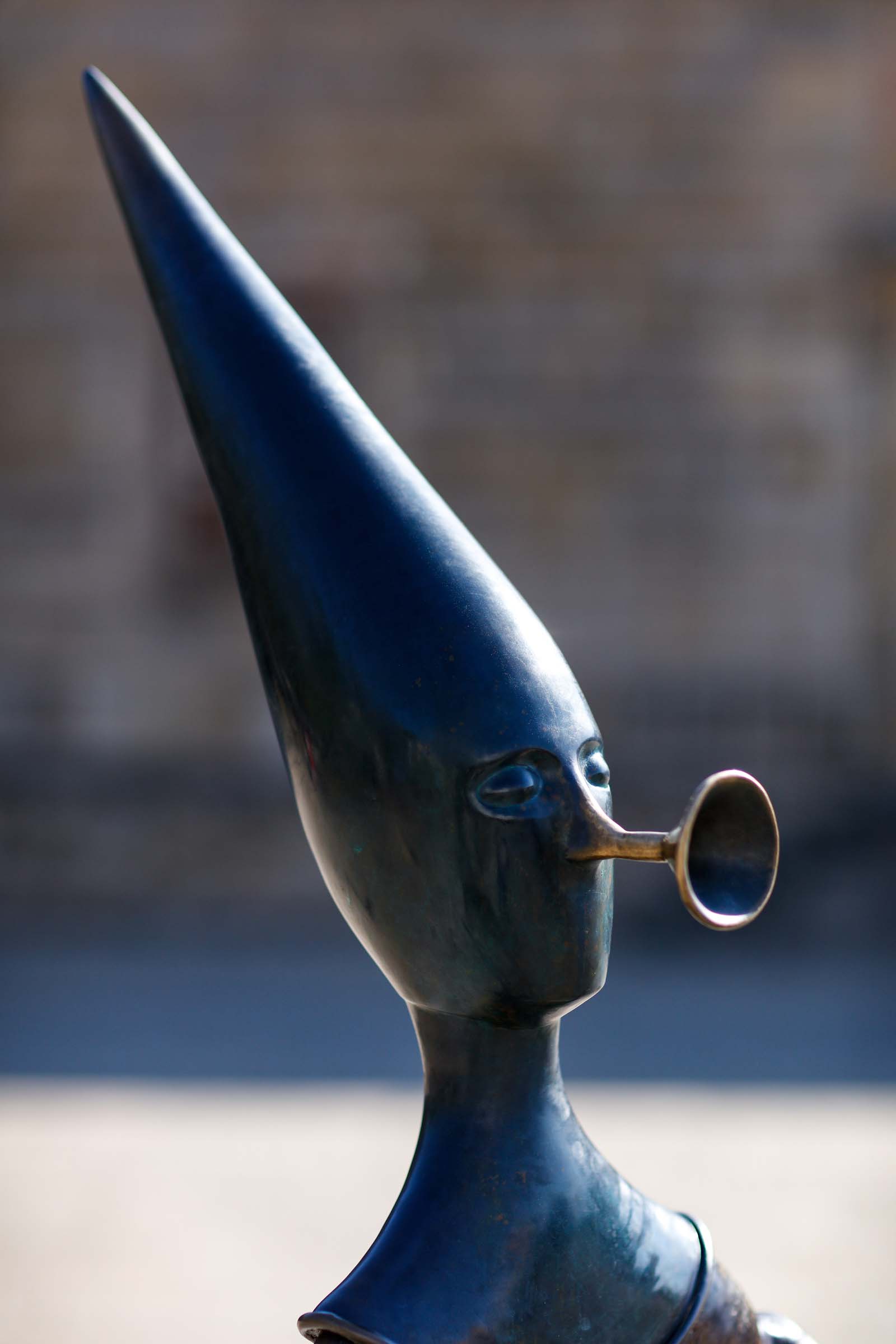
In January of this year, just before the Covid 19 Pandemic lockdown, I had the opportunity to visit the state of Jalisco, Mexico. Ever since my earliest days as a photographer my ultimate joy was to wander unknown streets and places and photographing anything that camptured my interest. Sometimes these could be things that locals would walk by every day and pay no attention to them. My ultimate goal was, and is, to produce a set of images that tells a brief story about this place I have discovered for the first time.
One of the first things I noticed upon landing in Guadalajara is that it is city that loves art. Everywhere you walk you are confronted with an array of sculptures and murals.
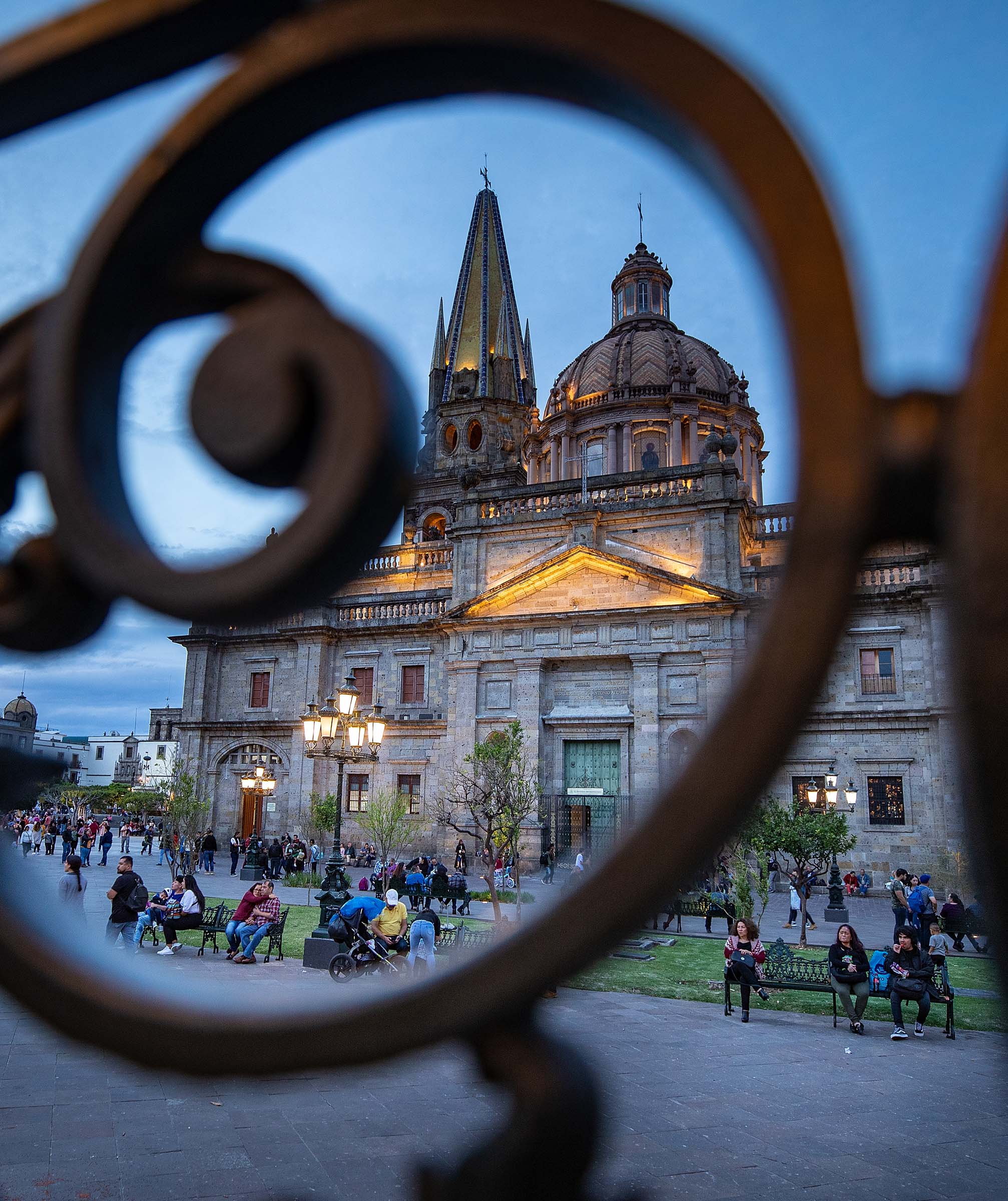
Plaza de Armas, Guadalajara
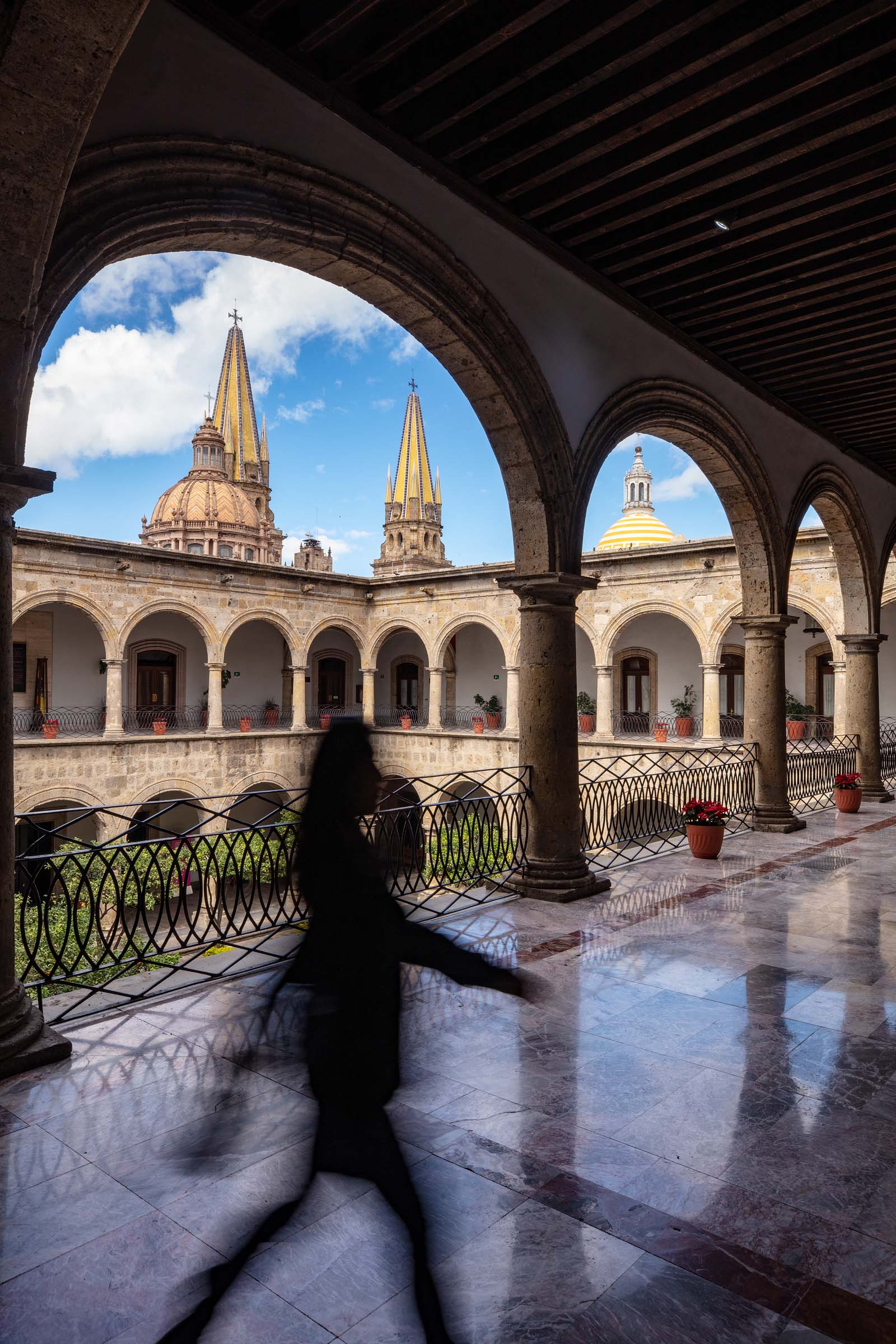
Inside the Palacio de Gobierno with a view of the Guadalajara Cathedral
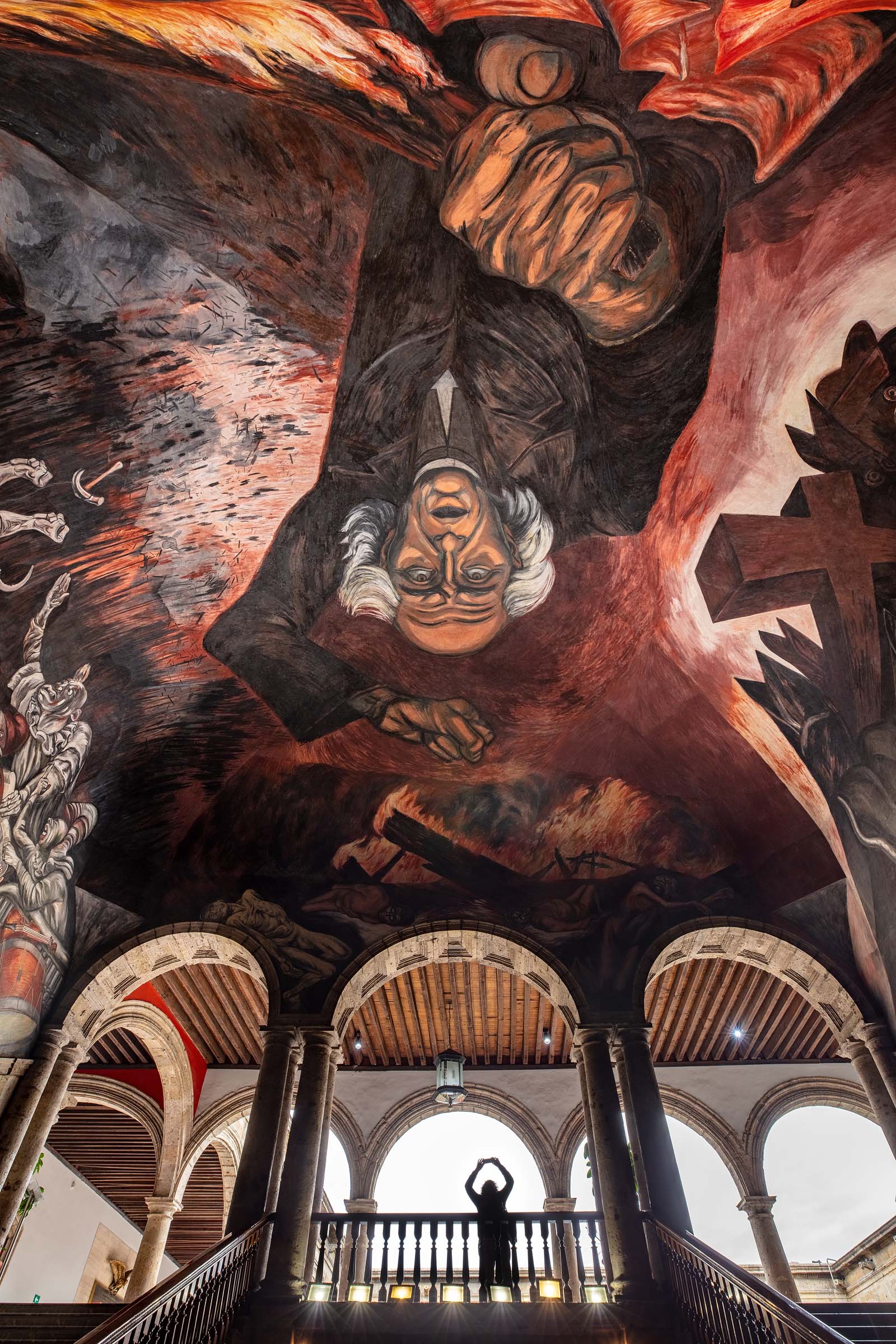
A visitor to the Palacio de Gobierno pauses to take a photo of the massive mural called “Hidalgo” created by Jose Clemente Orozco
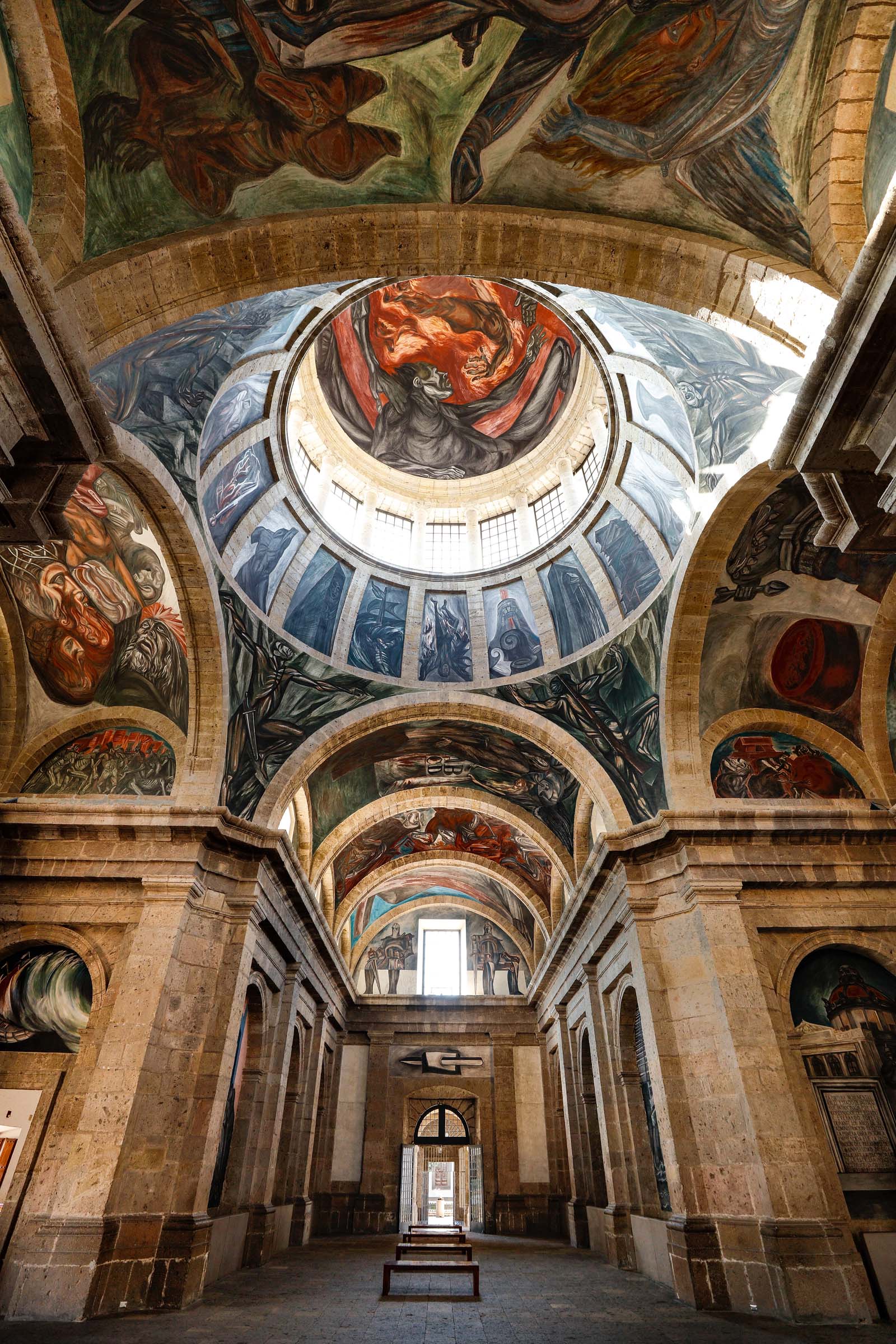
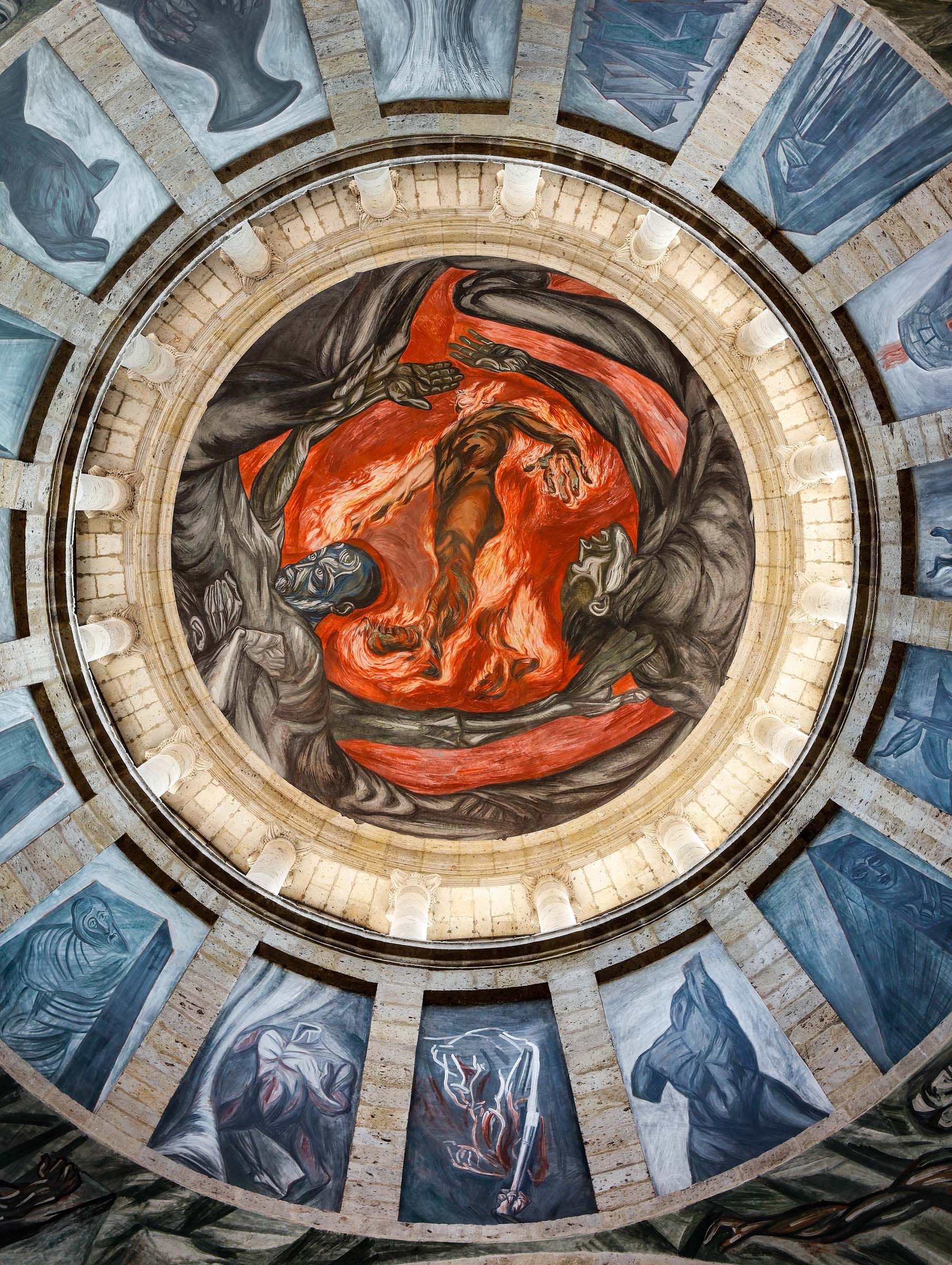
A view inside one of the building on the grounds of the Instituto Cultural Cabanas with its many murals by Jose Clemente Orozco
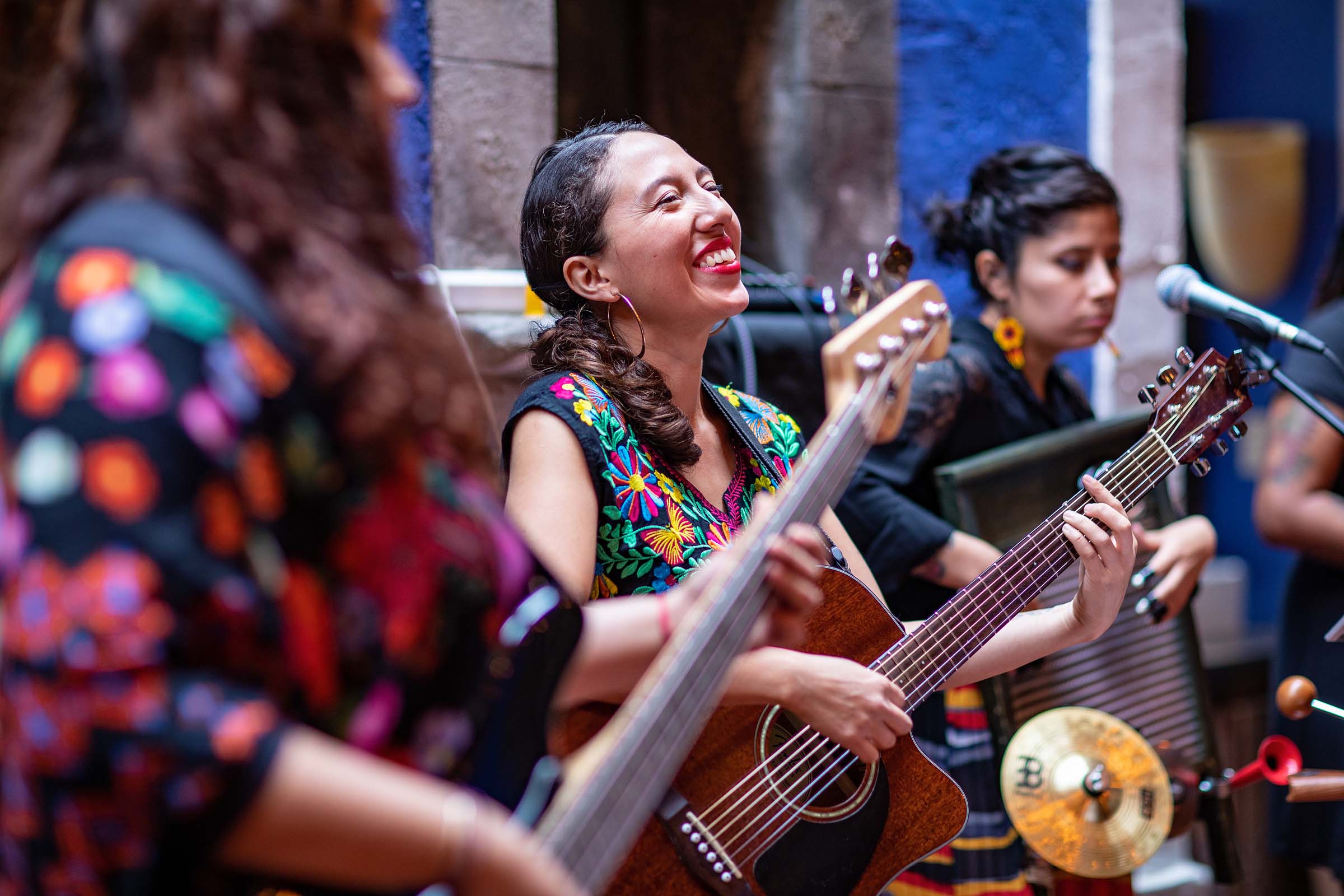
Music and art go hand in hand so it didn’t surprise me when would find ourselves being entertained by a variety of music at any given moment. Roving musicians would appear in bars, restaurants and on along walking streets. Each with their own sound. Some played and sang traditional Mexican ballads while others took a more modern approach and then there were those that pushed the envelope of sound. And, of course, there’s always a fair share of buskers singing cover songs.
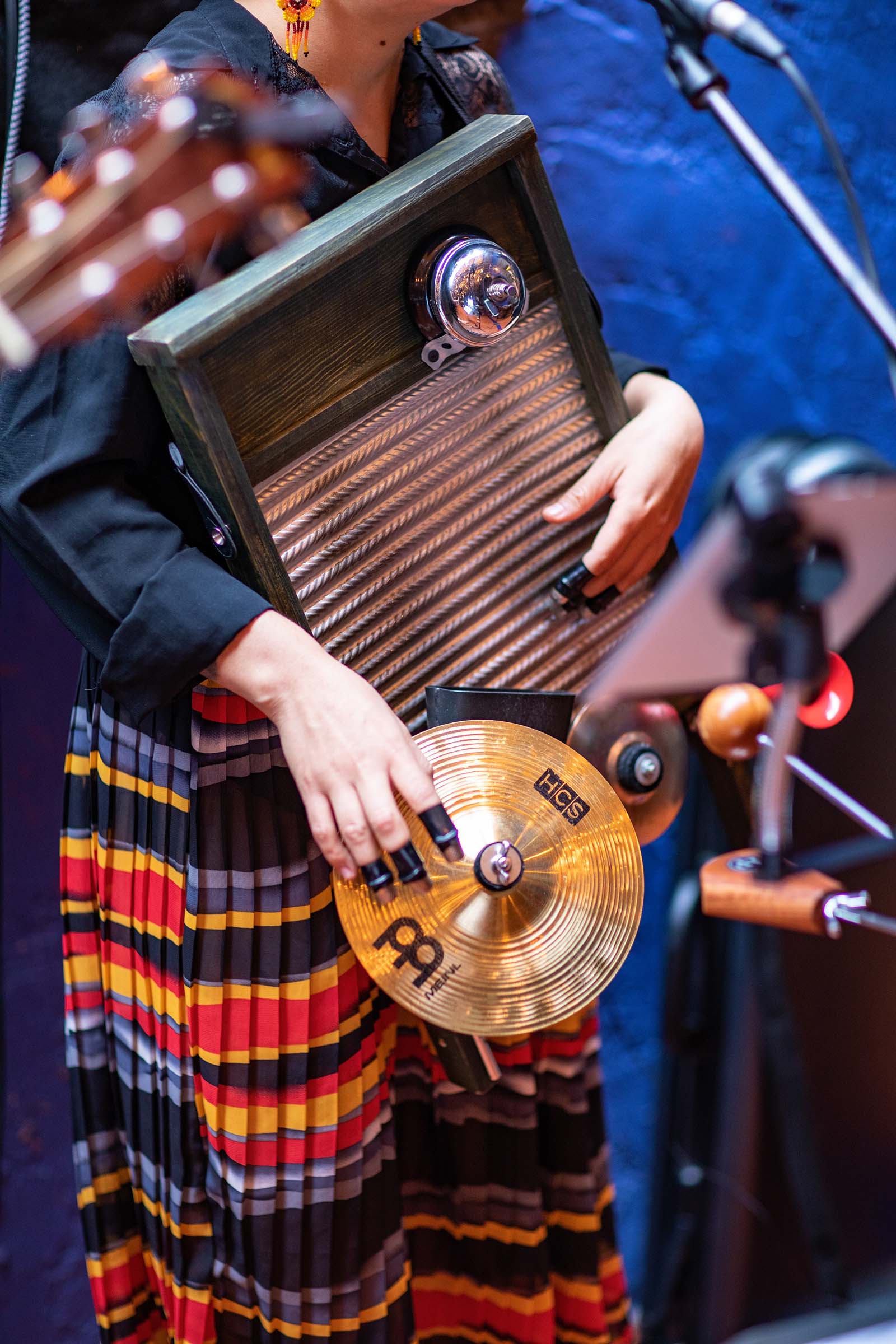
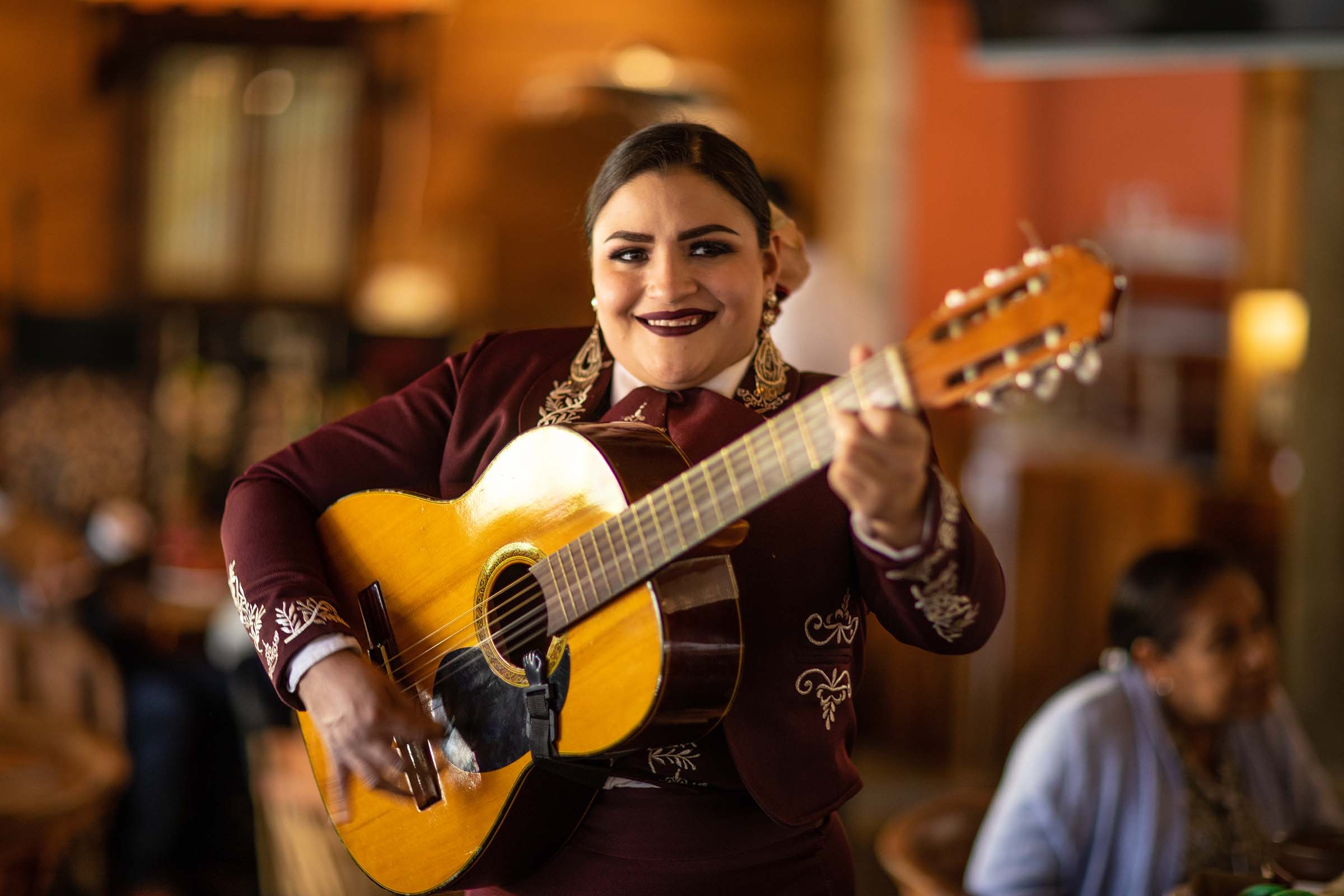
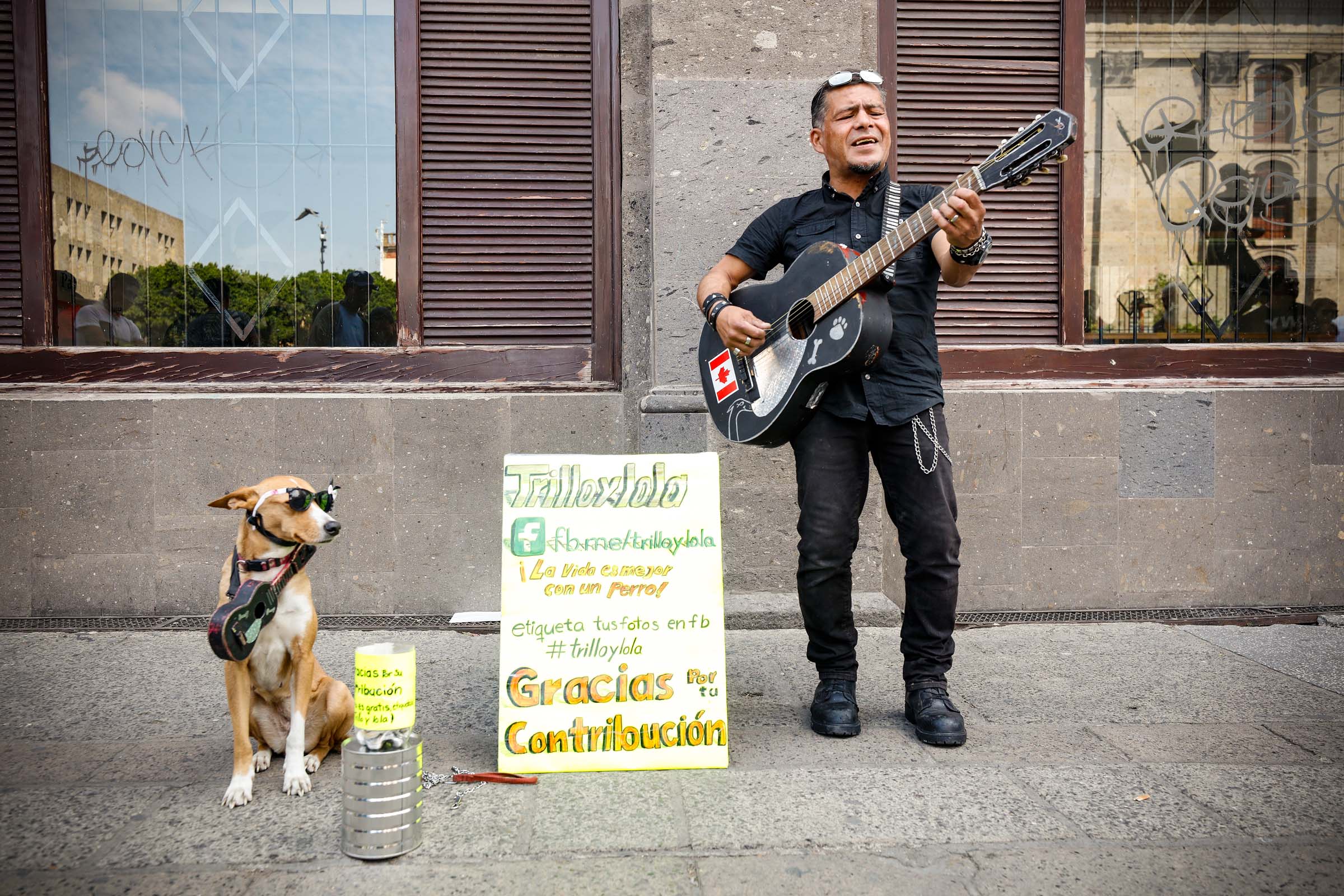

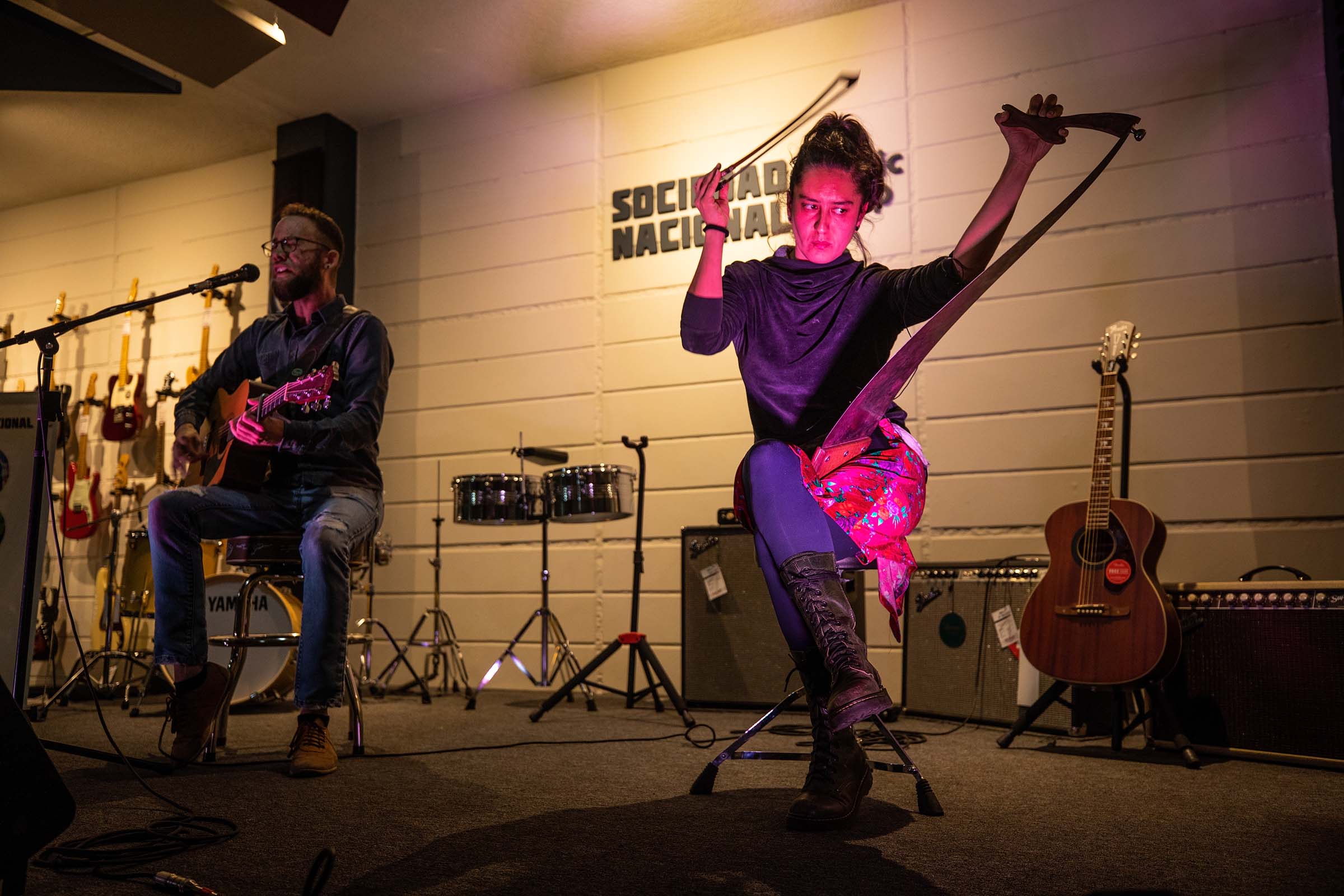
Venturing outside of Guadalajara we visited a couple of neighboring cities which were both famous for their artisans. In Tlaquepaque we with the sculptor Rodo Padilla and were able to spend some time in his studeo/factory. Padilla is famous for his series of sculptures Gordito figurines. The Gordito (chubby) characters are presented in a whimsical fashion with each ceramic sculpture depicting a different scene.
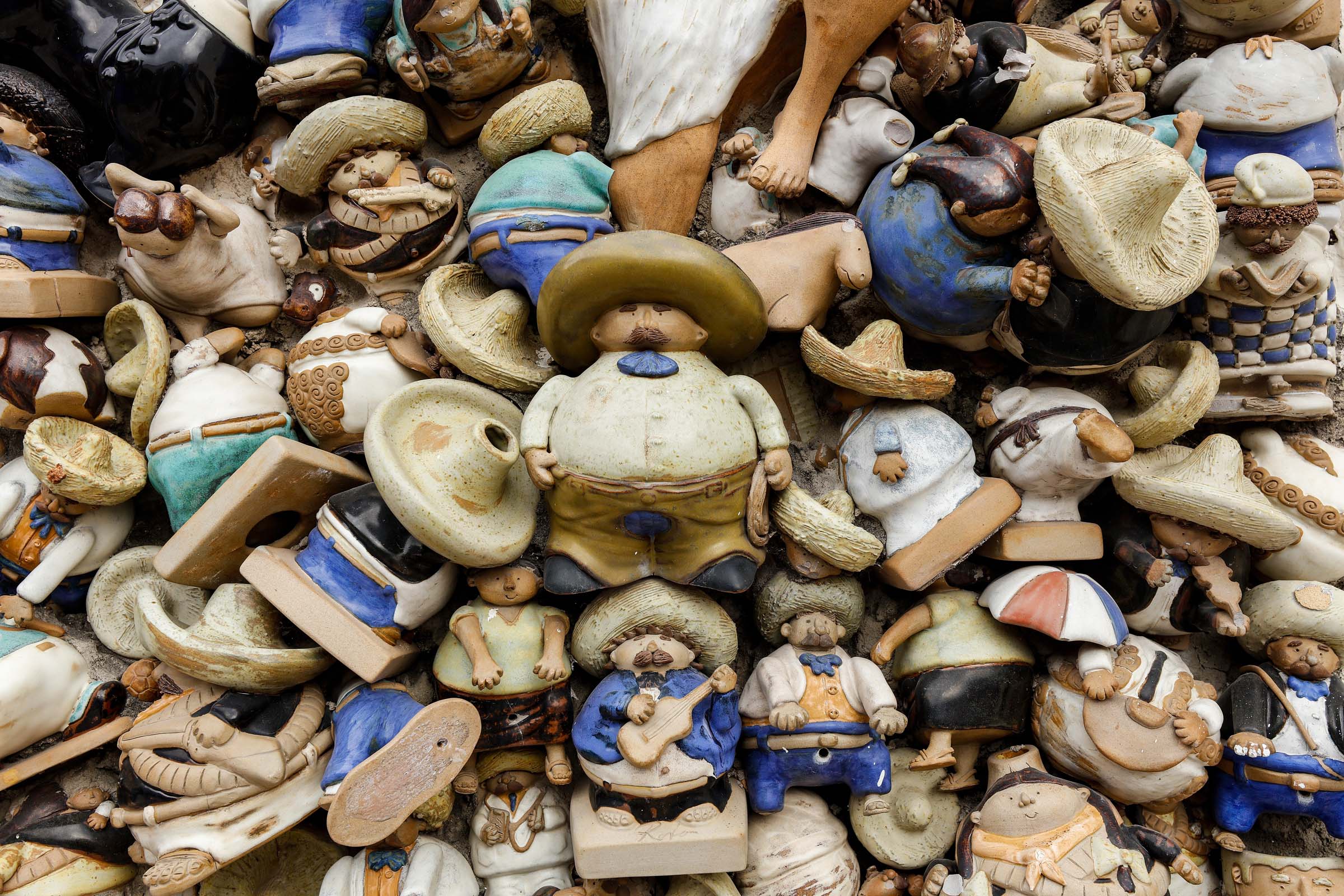
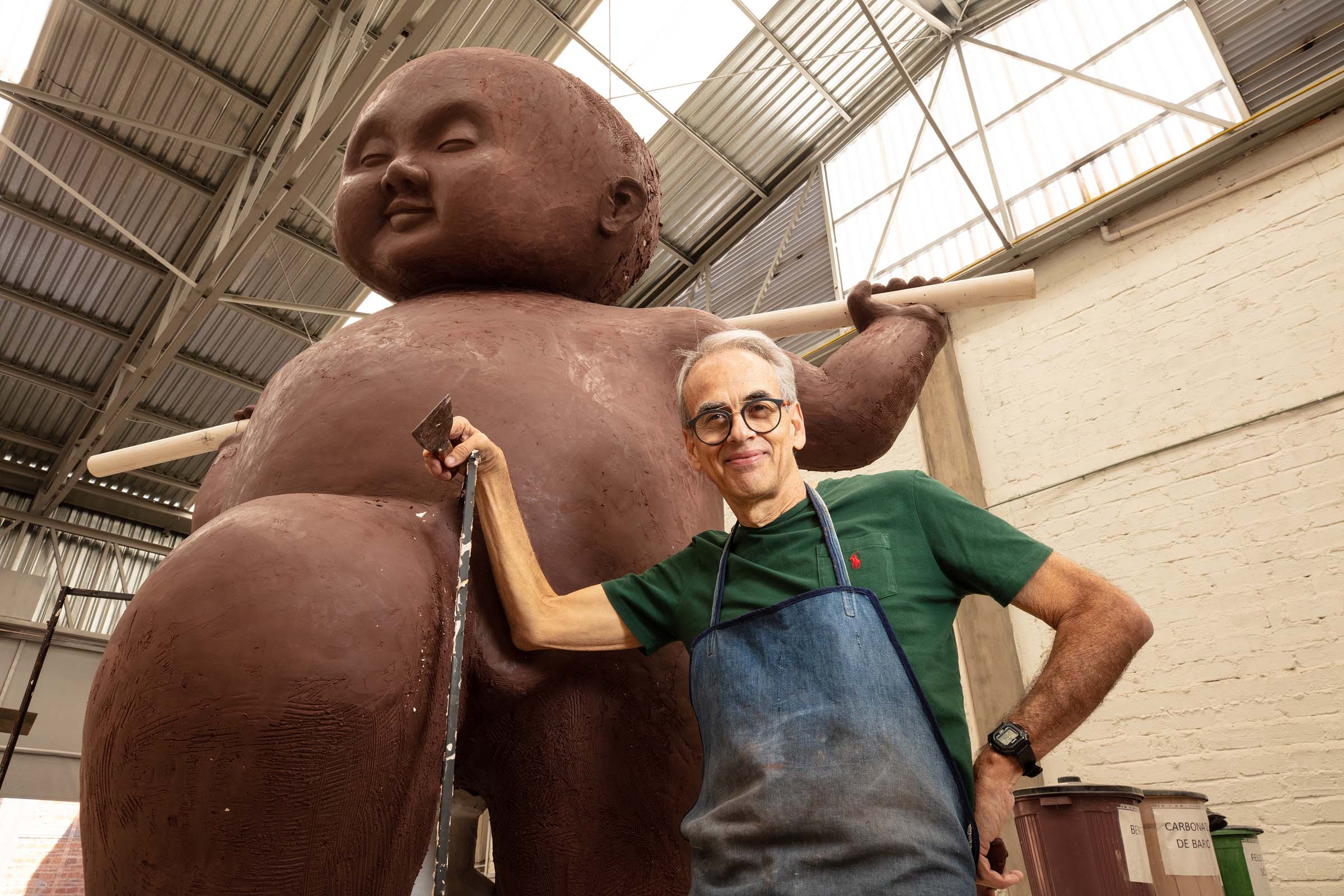
Artist Rodo Padilla in his workshop/factory located in Tlaquepaque, Jalisco
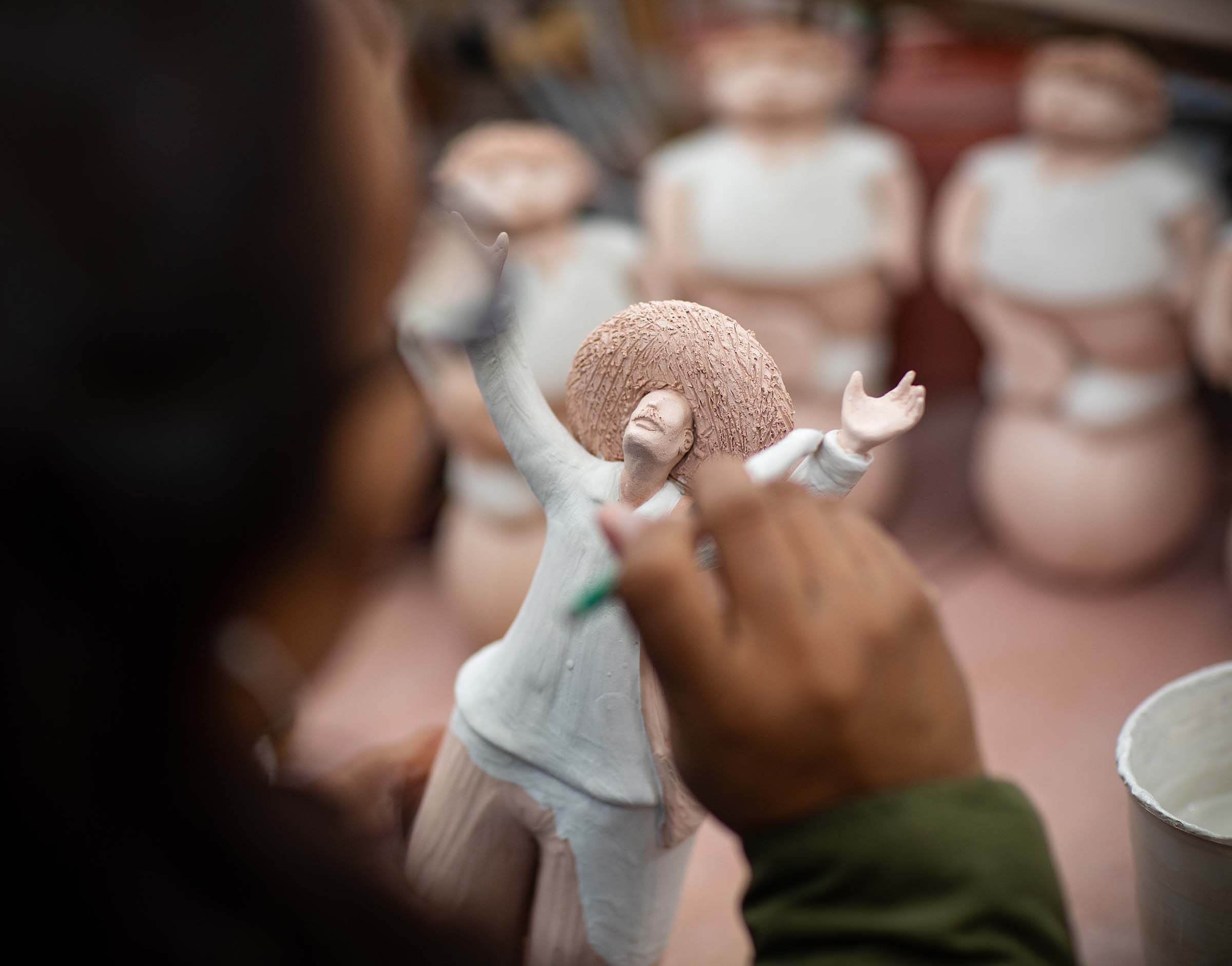
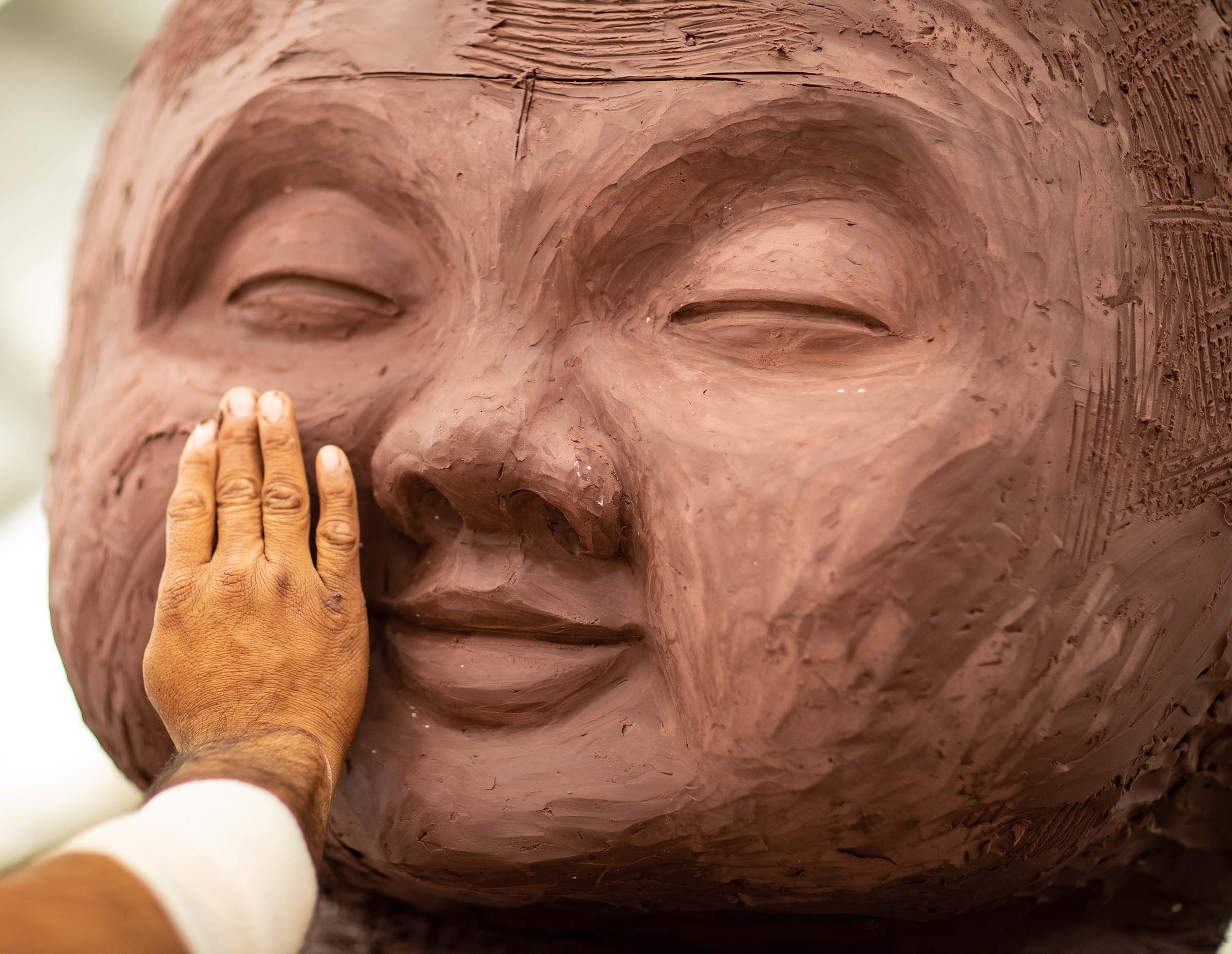
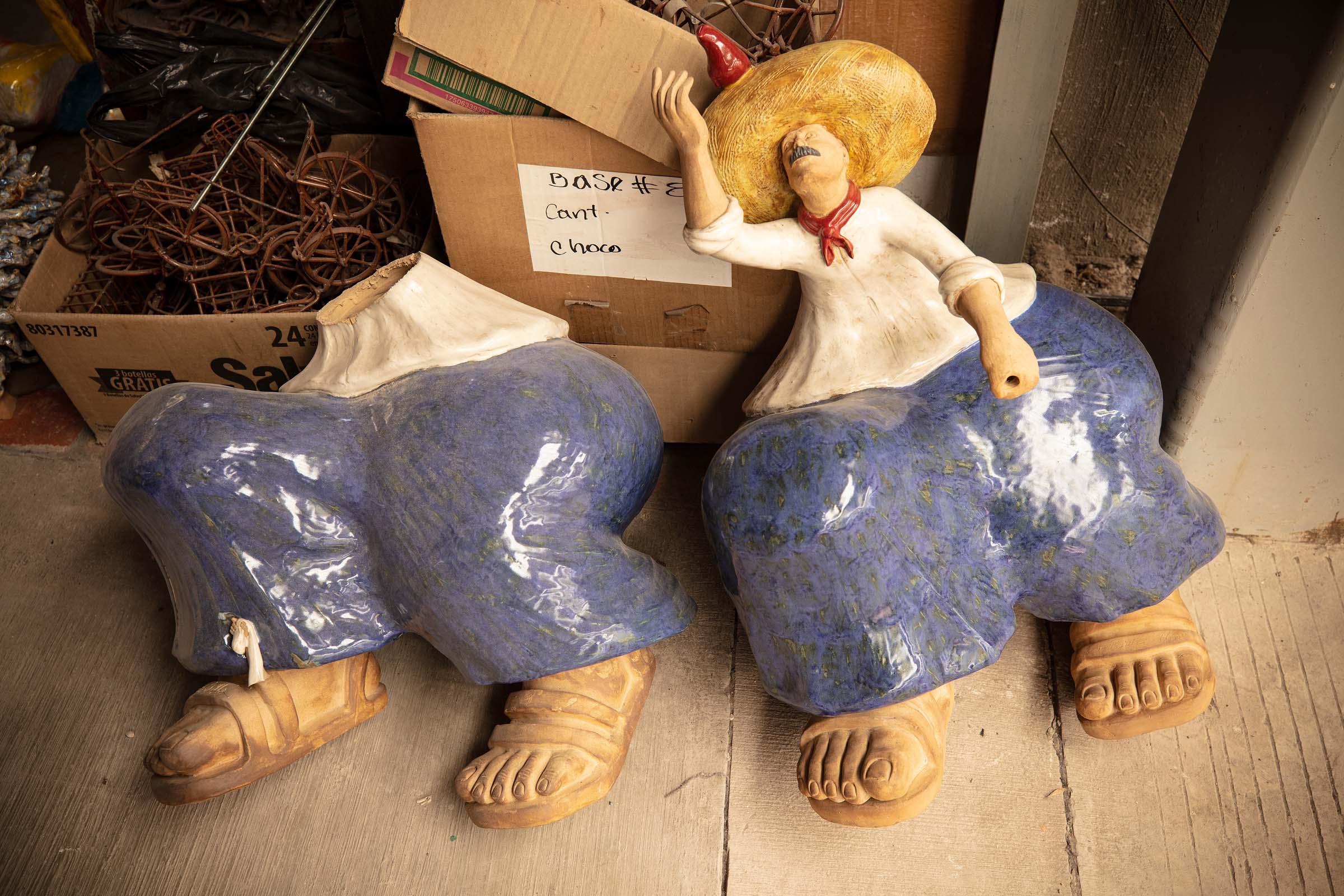
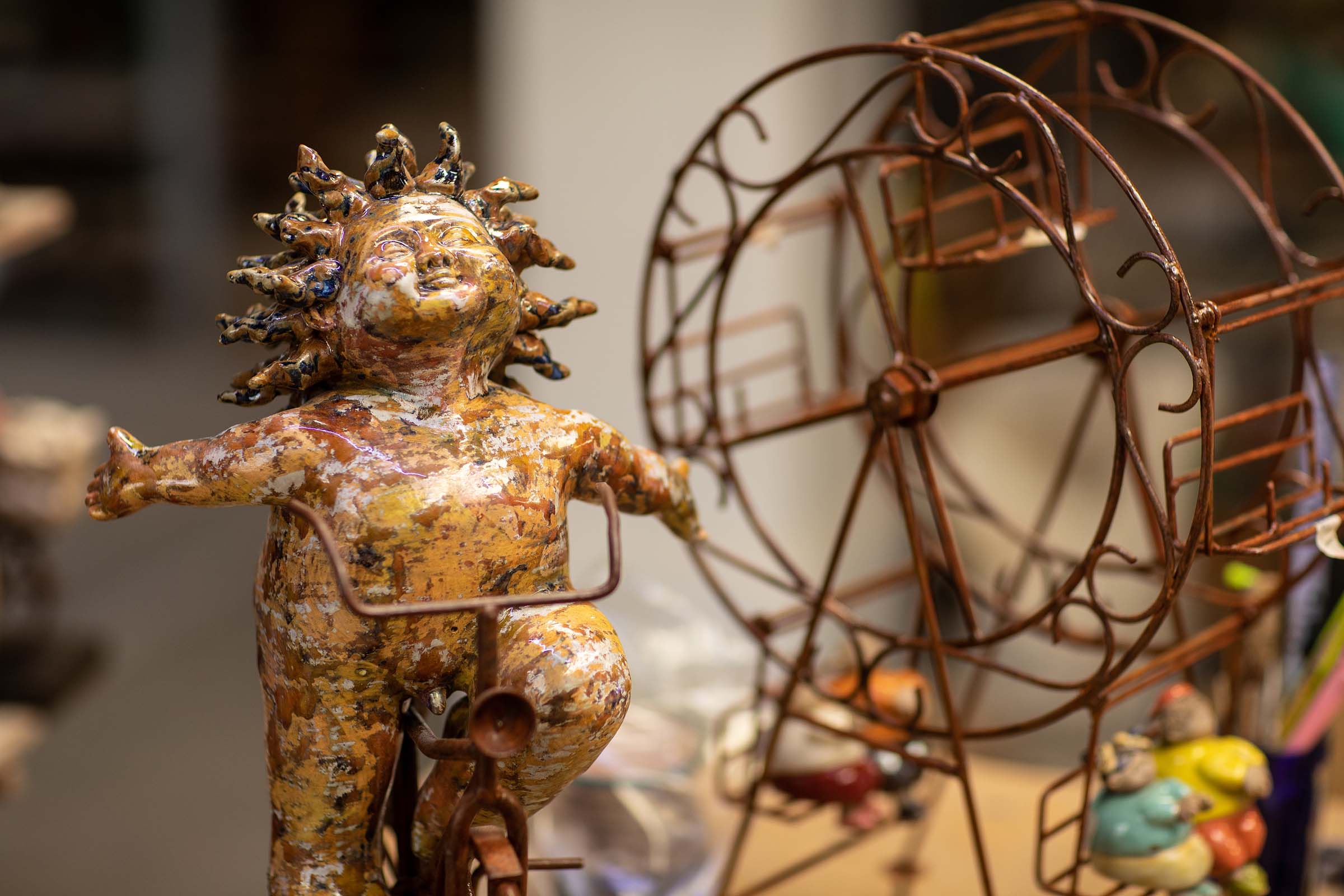
This ceramic sculpture is from another series created by Padilla called “De los Niños es el Reino de los Ceilos” or “The Kingdom of Heaven belongs to the children”
In doesn’t take long to get out of the city and find yourself in the Jalisco countryside. The arrid landscape can seem like a formible environment to farm anything but it’s actually perfect for the primary ingredient to make tequila. Agave. There many types of agave but the one required, by law, to make tequila is the Blue Agave. Driving through the Jalisco Lowlands and Highlands you find yourself surrounded by fields and fields of the stuff. This highly sought after plant takes a patient farmer to grow it as it can take up to eight years for a plant to mature and make itself ready for harvest.
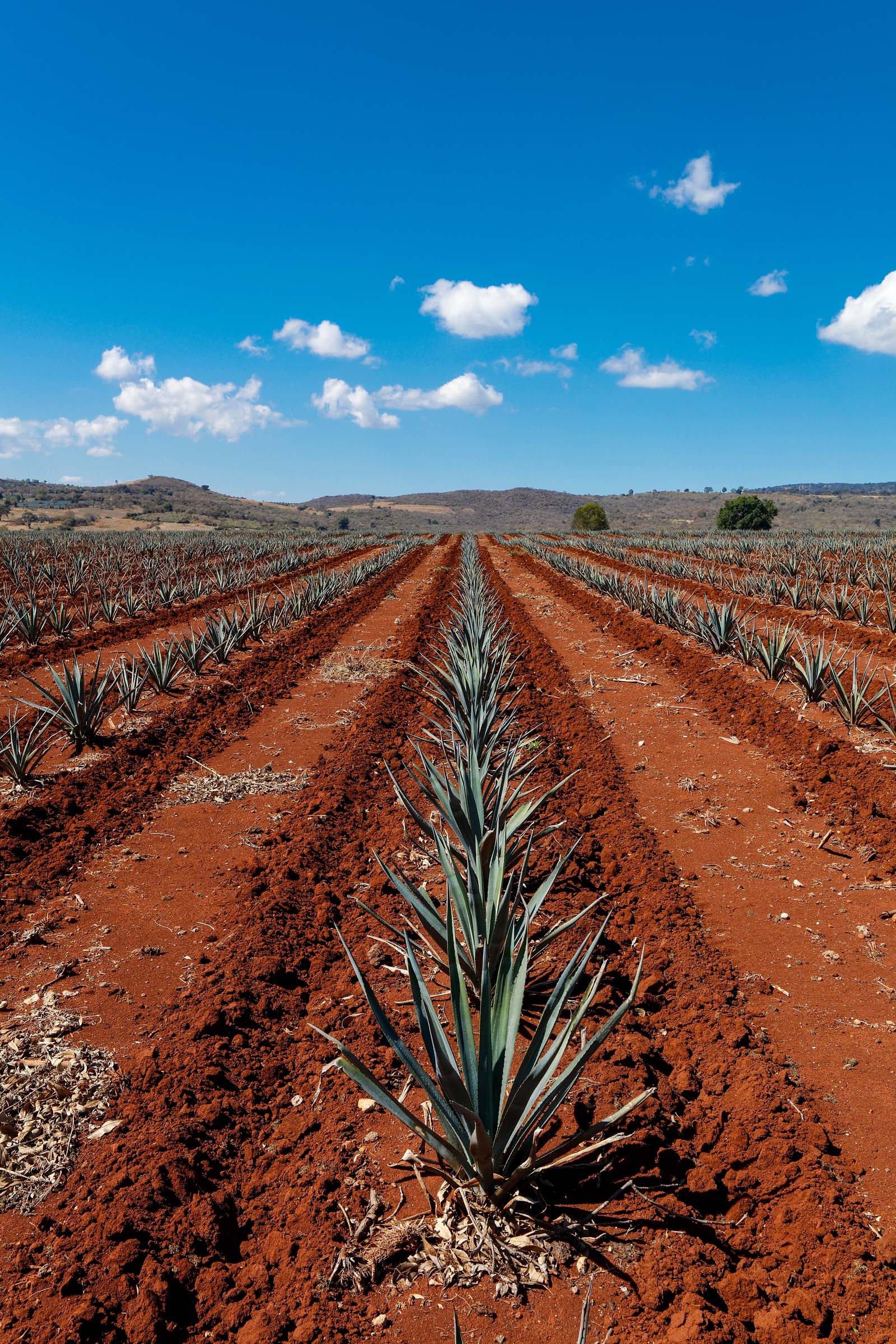
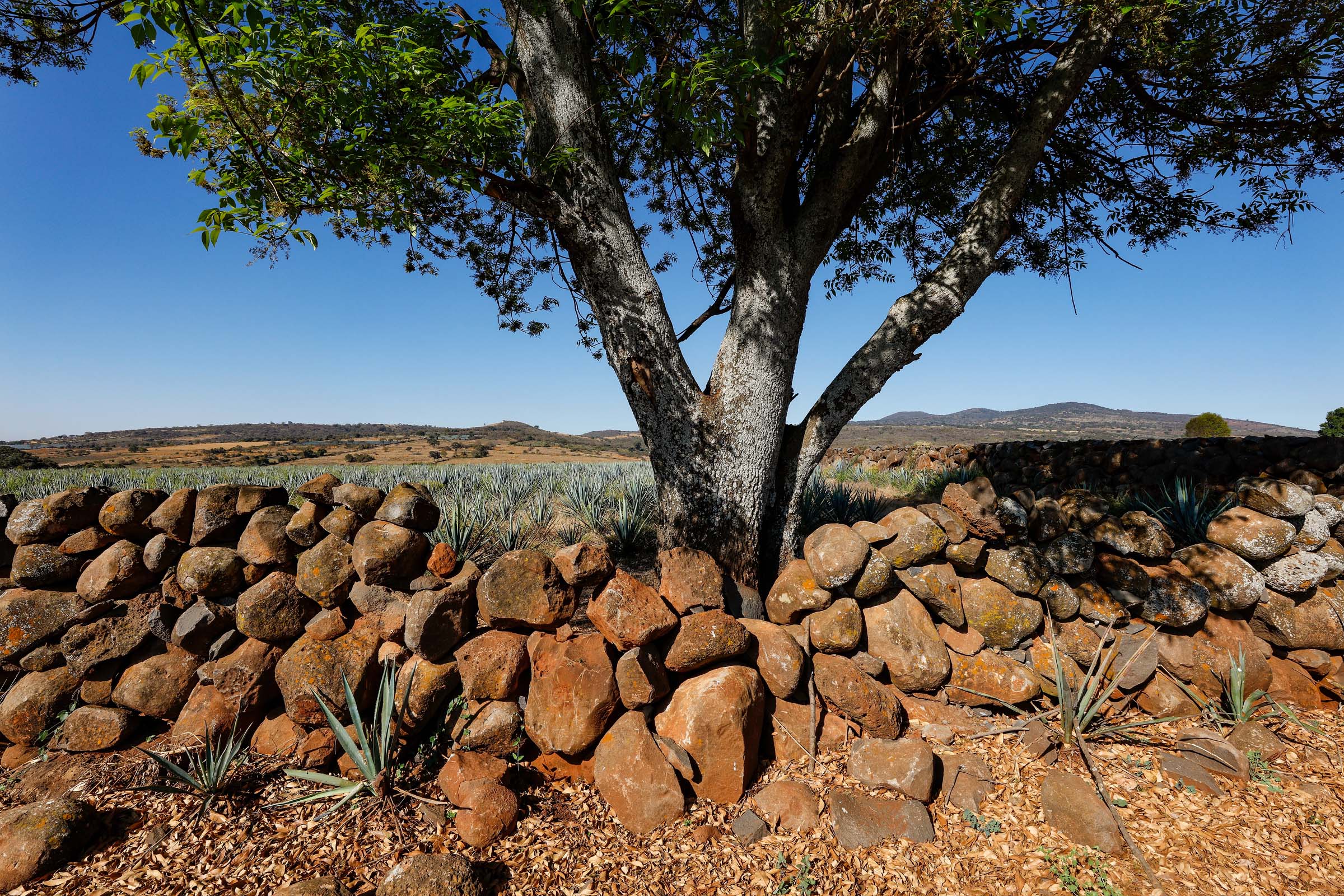
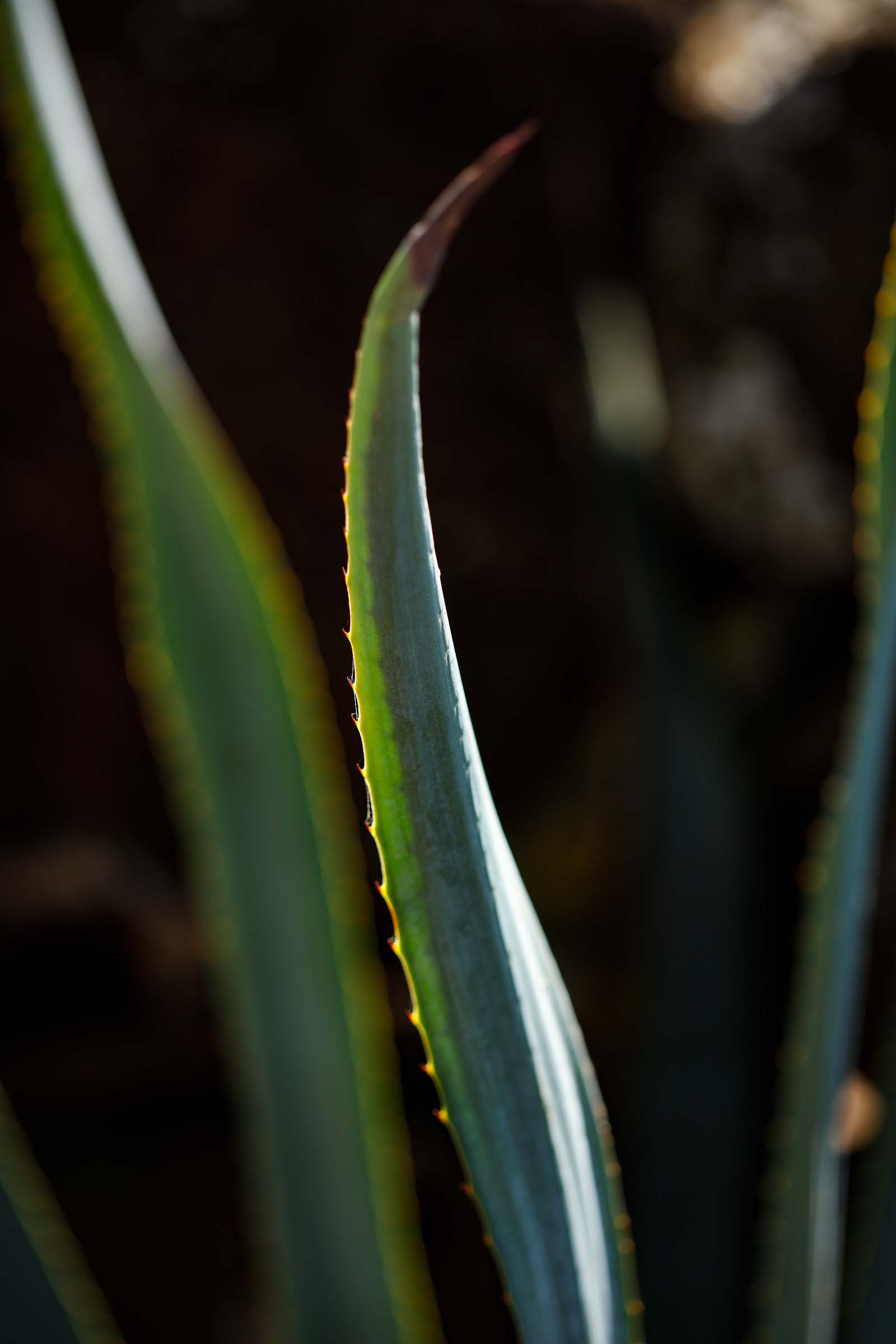
Once the agave has reached maturity it is ready for harvest. This kind of harvesting is all done by hand and takes a strong individual with great stamina to be able to work all day in the hot Jalisco sun. This individual is known and a jimador and it is his task to both remove the large agave plant from the ground and then slice off all the leaves to reveal the heart of the plant called the pẽna. It is the pẽna that contains all the sugar and agave flavor needed to distill tequila.
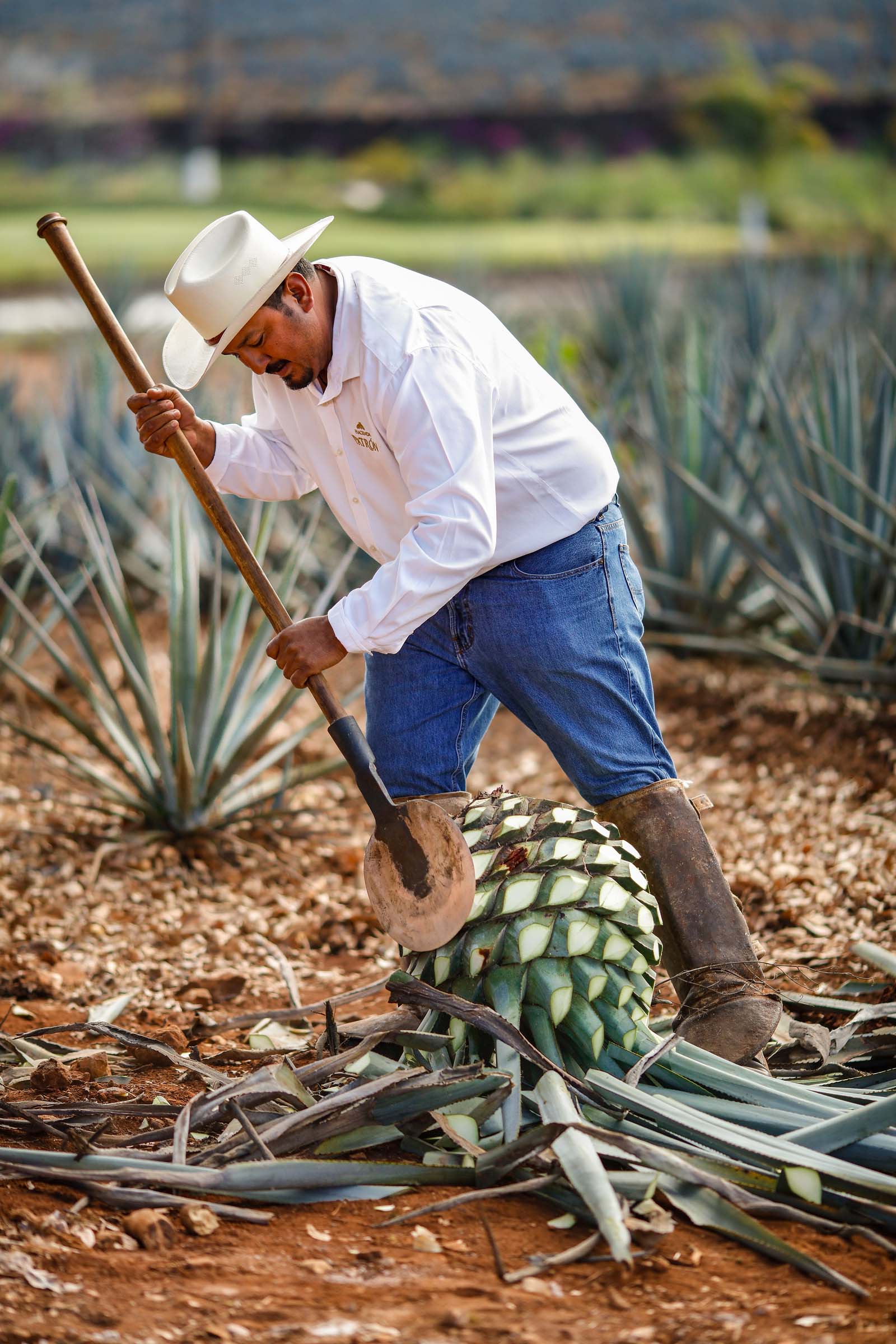
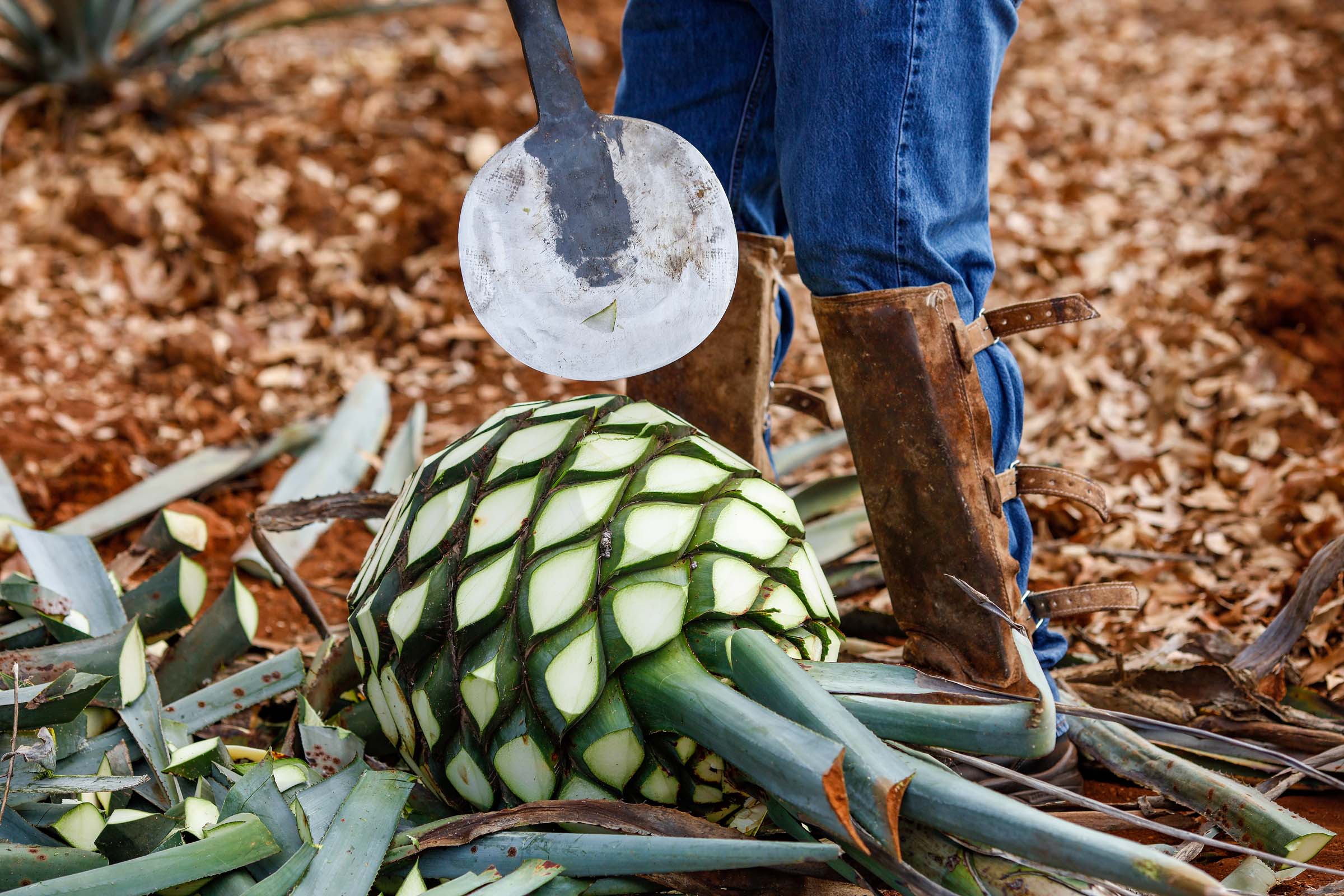
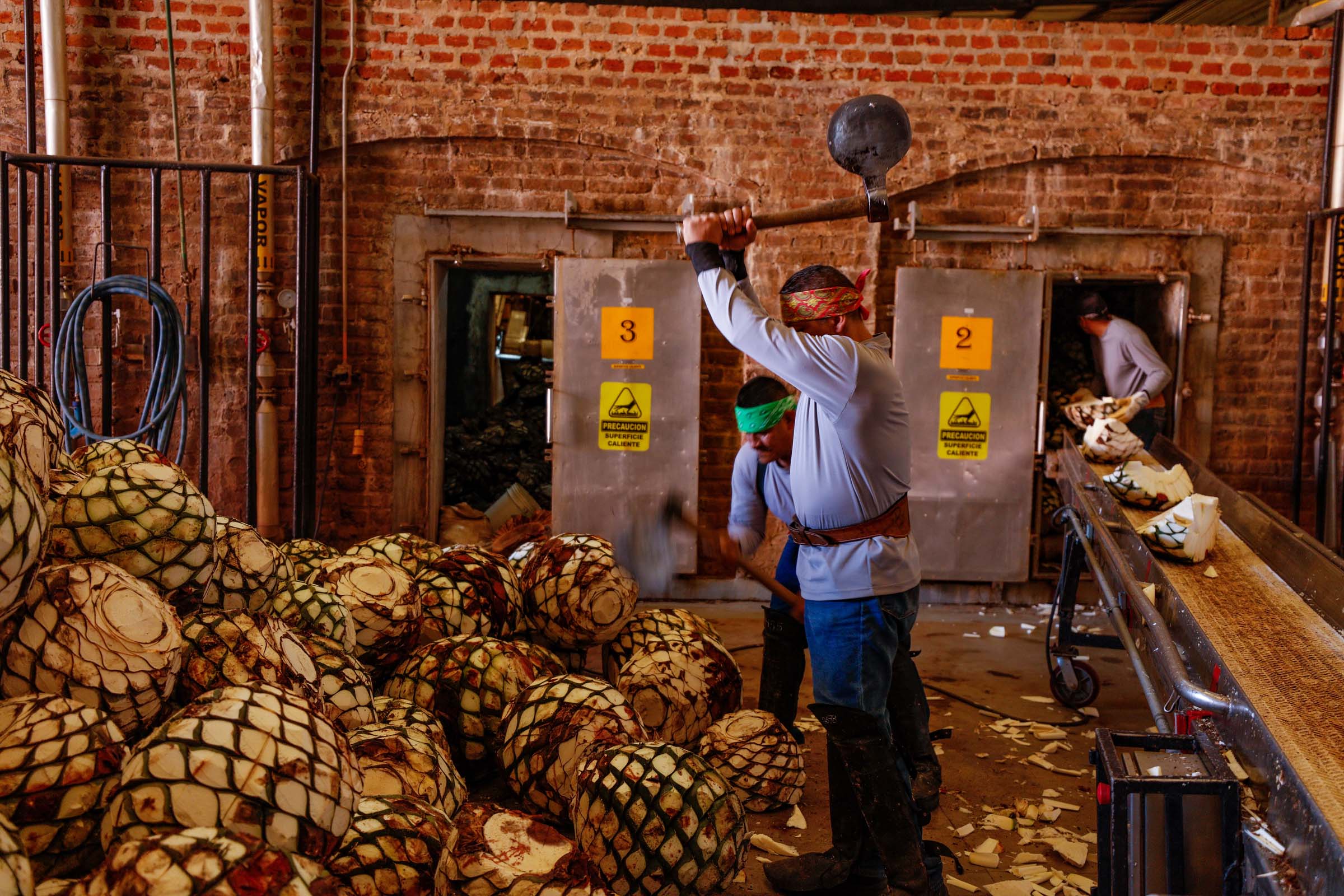
Patron tequila distillery, Jalisco, Mexico
After the agave is harvested we headed over to the Patron distillery where had a look at their process for making their world renowned tequilla. The first step is to prepare the agave for the oven. Workers will chop up the pẽnas into smaller chunks so that they can cook all the way through thus allowing the sugary rich juice to be extracted.
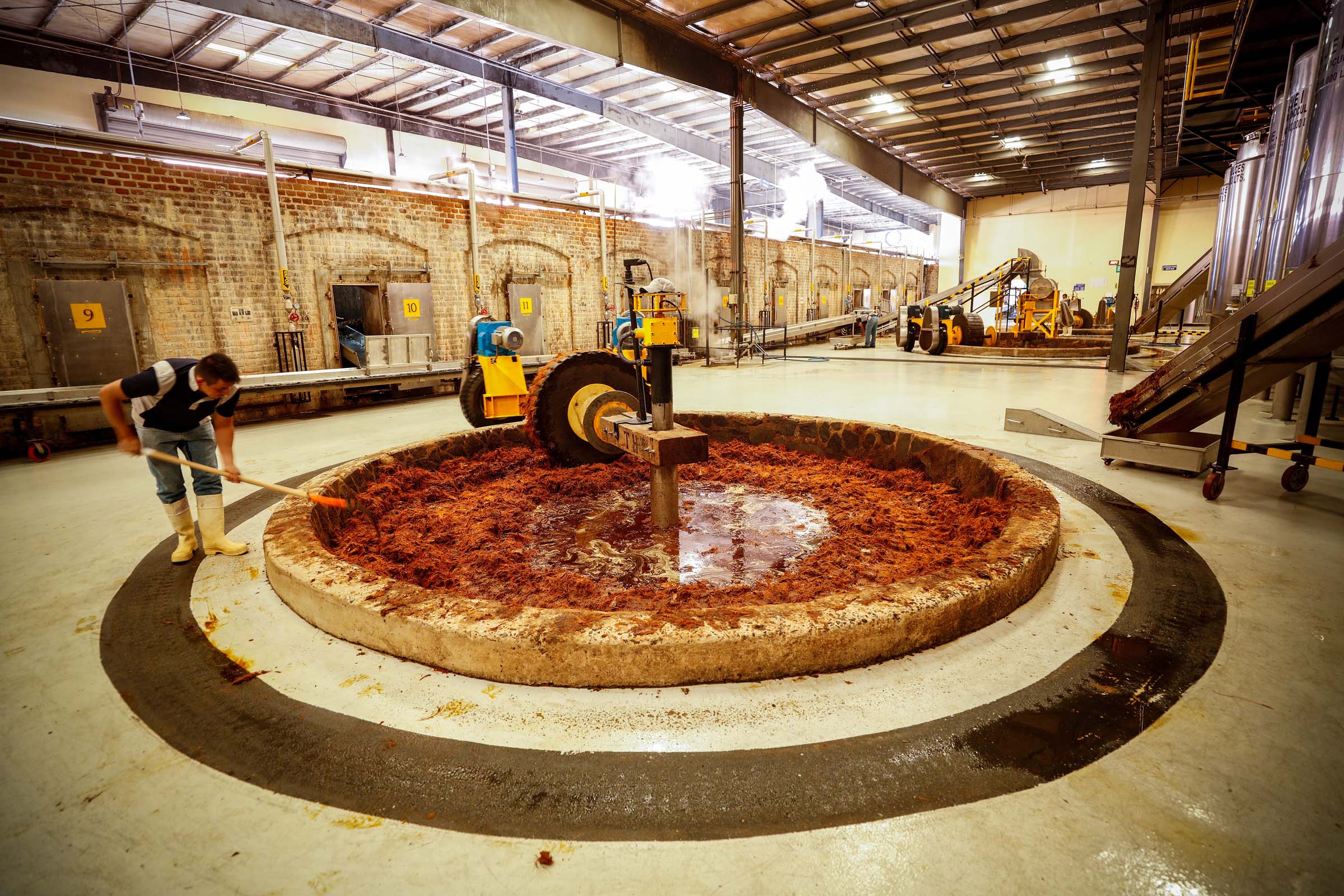
After the agave has been cooked it is then transported to an area where any remaining juice can be squeezed from its fibrous husk.
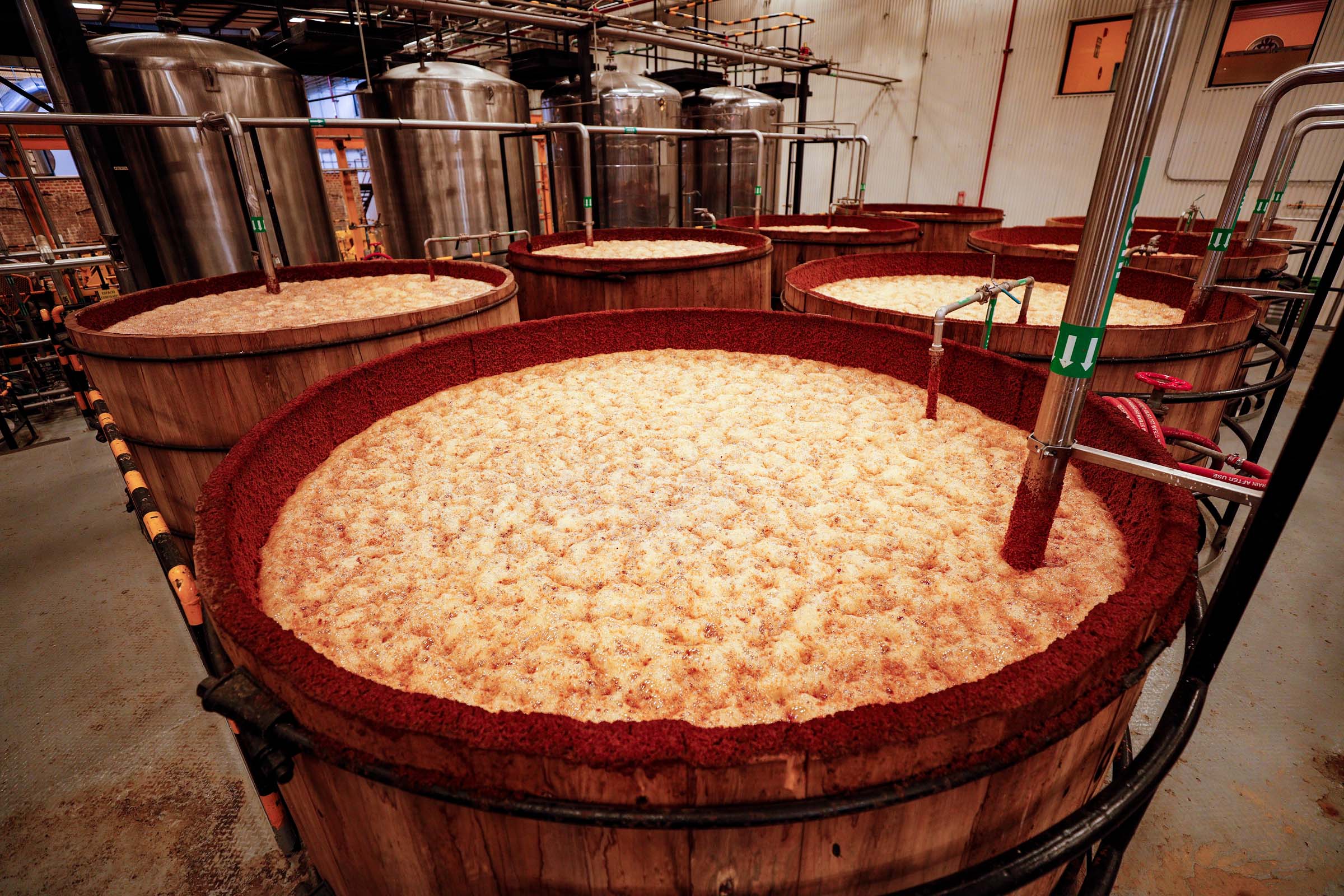
The agave juice is then poured into large open-air vats where the fermentation process will take place.
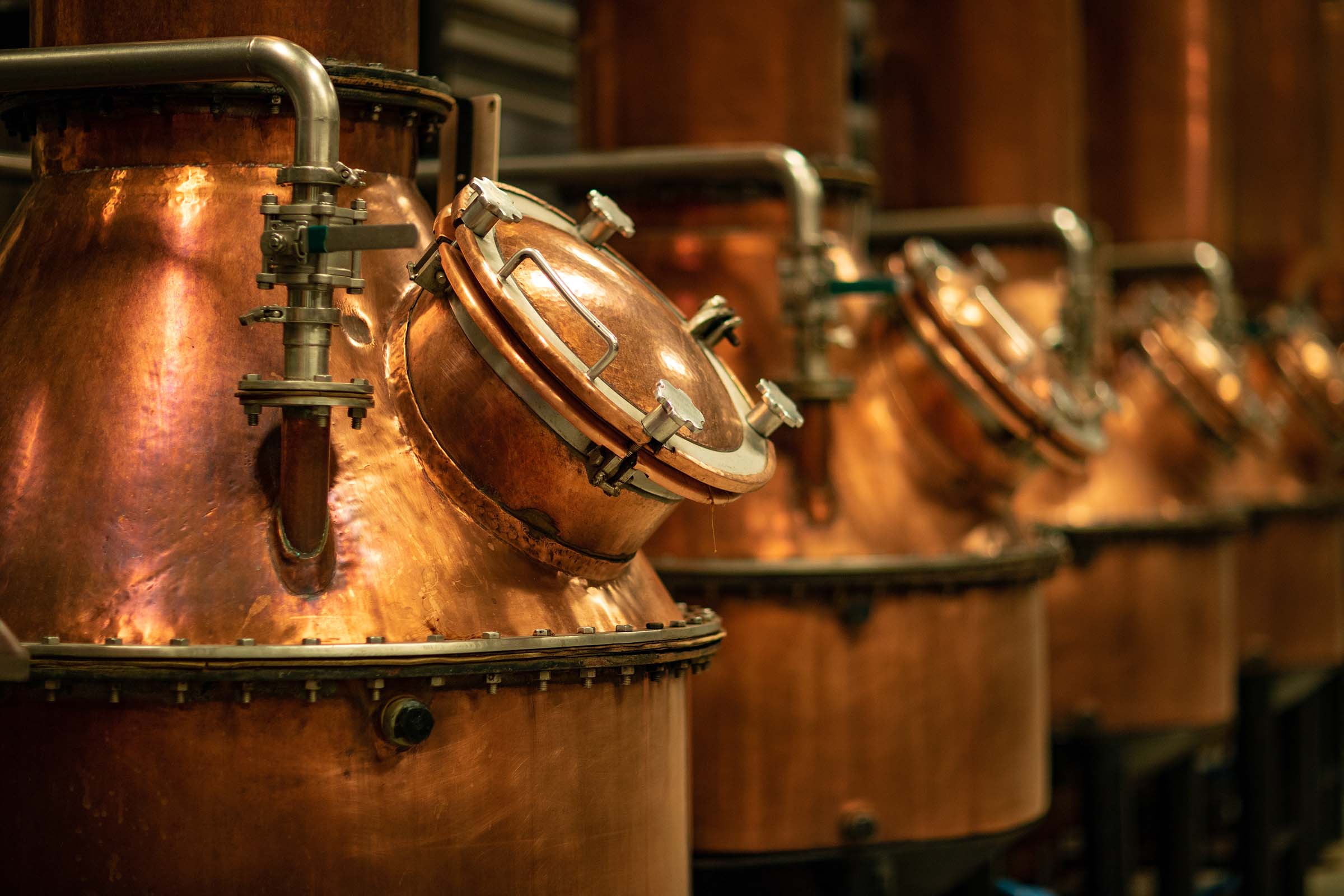
Once the fermentation process is complete the liquid heads over the stills where it is converted into that wonderfully fragrant spirit enjoyed around the world.
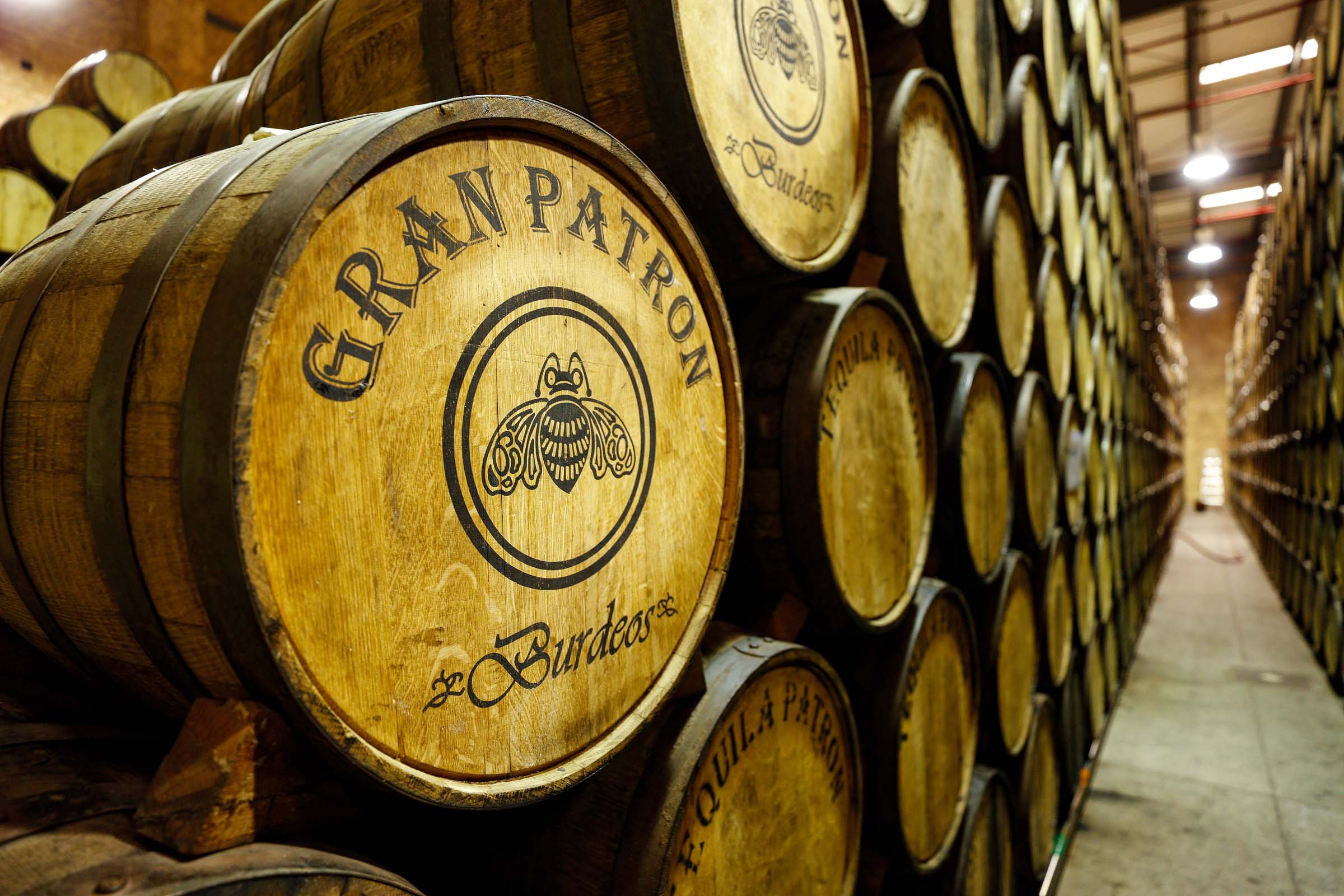
The final step is to place the tequila into large wooden barrels for ageing.
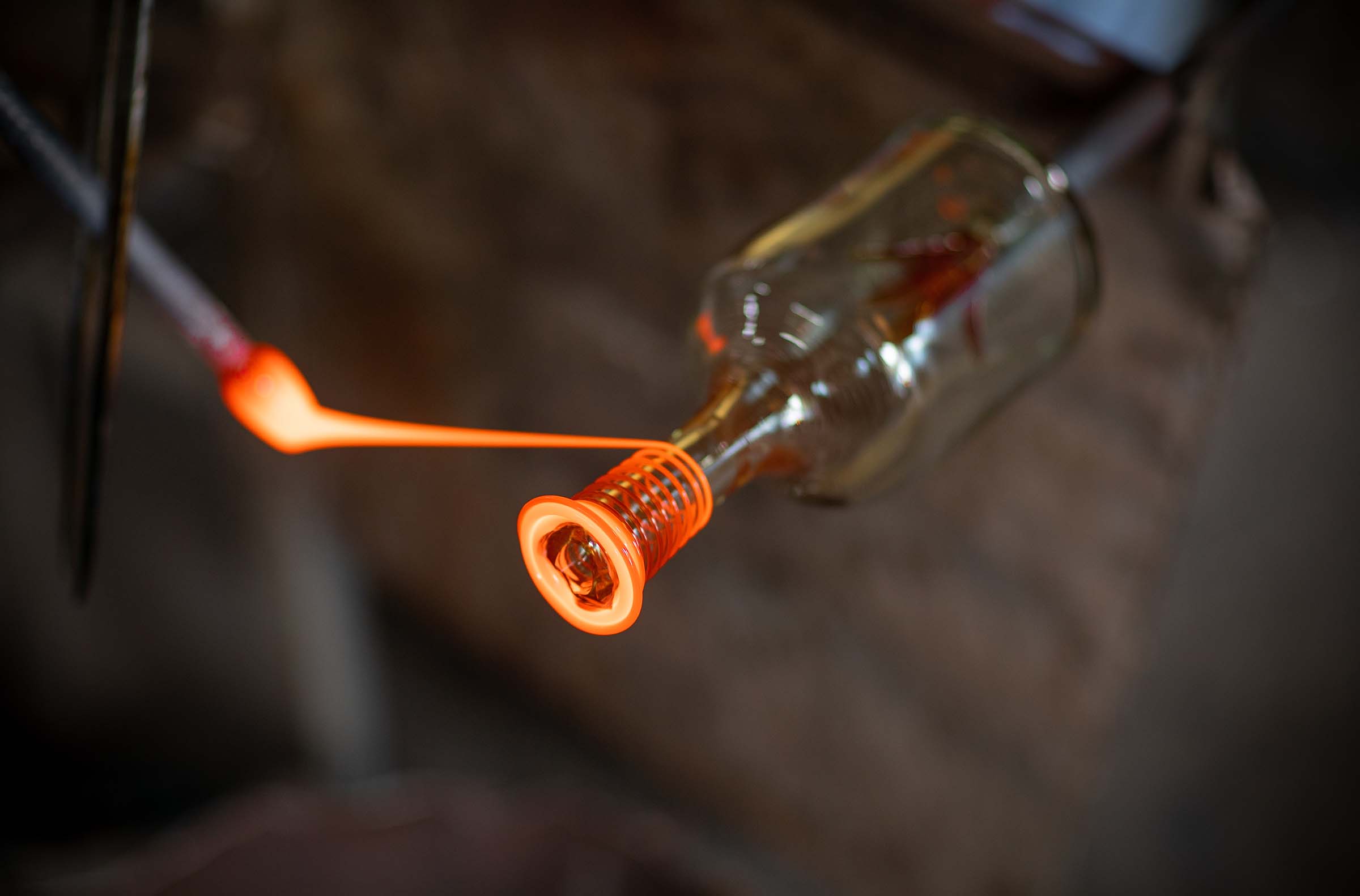
After visiting the Patron Distillery we headed over to the artisan town of Tonalá where we visited glass factory where tequila bottles are made from hand blown glass. The factory owned and operated by Hipólito Gutiérrez who in addition to making beautifully crafted bottles is also in the Guiness Book of World Records for single-handedly glassblowing a 32 liter bottle.
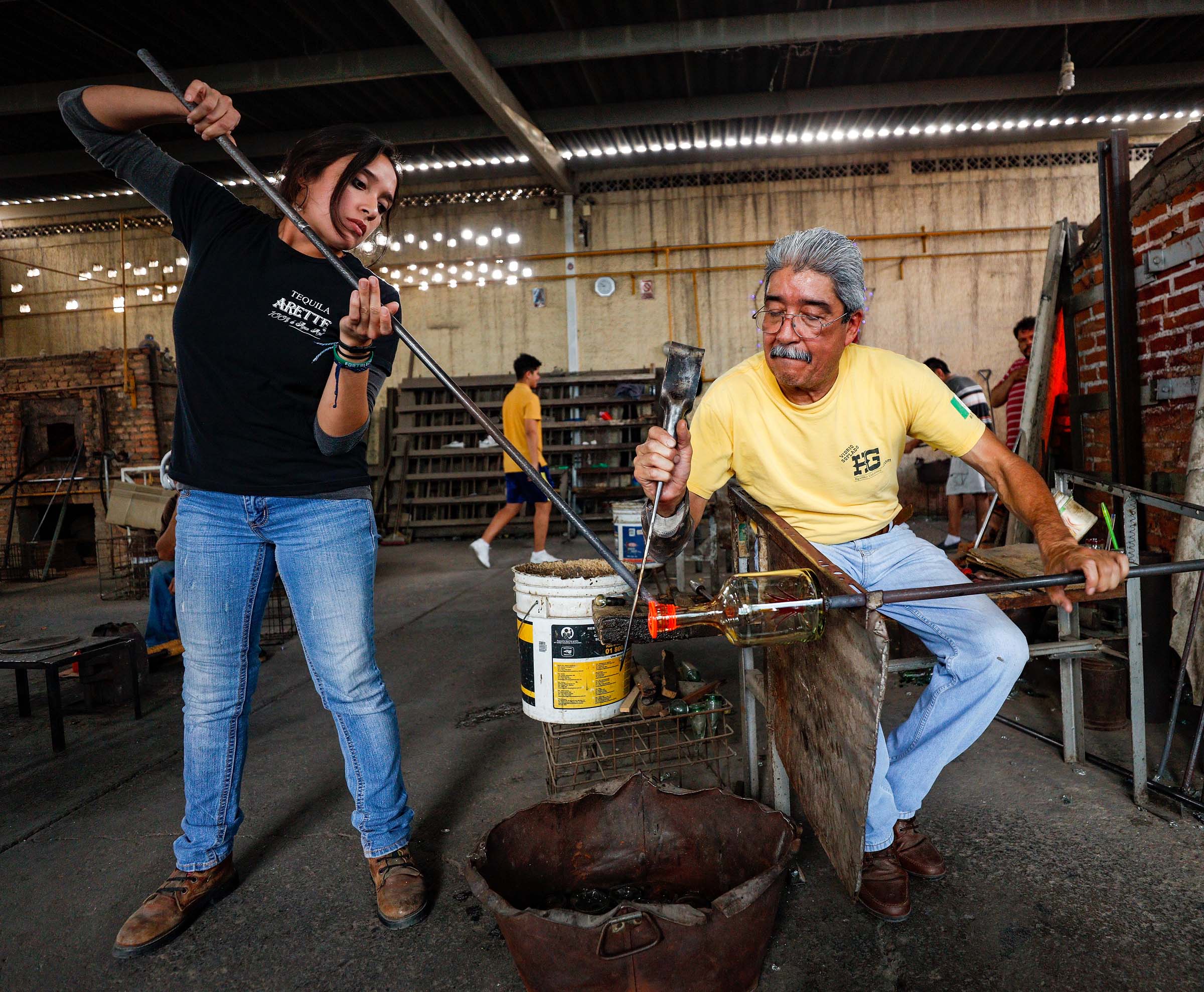
Following in the footsteps of Gutiérrez is his daughter, Alejandra, who is an artist in her own right, and is now learning the craft of glass making. On this particular day that we visited the factory the two of them were busy making a batch of their signature decanters which features a glass agave in the base of the bottle.
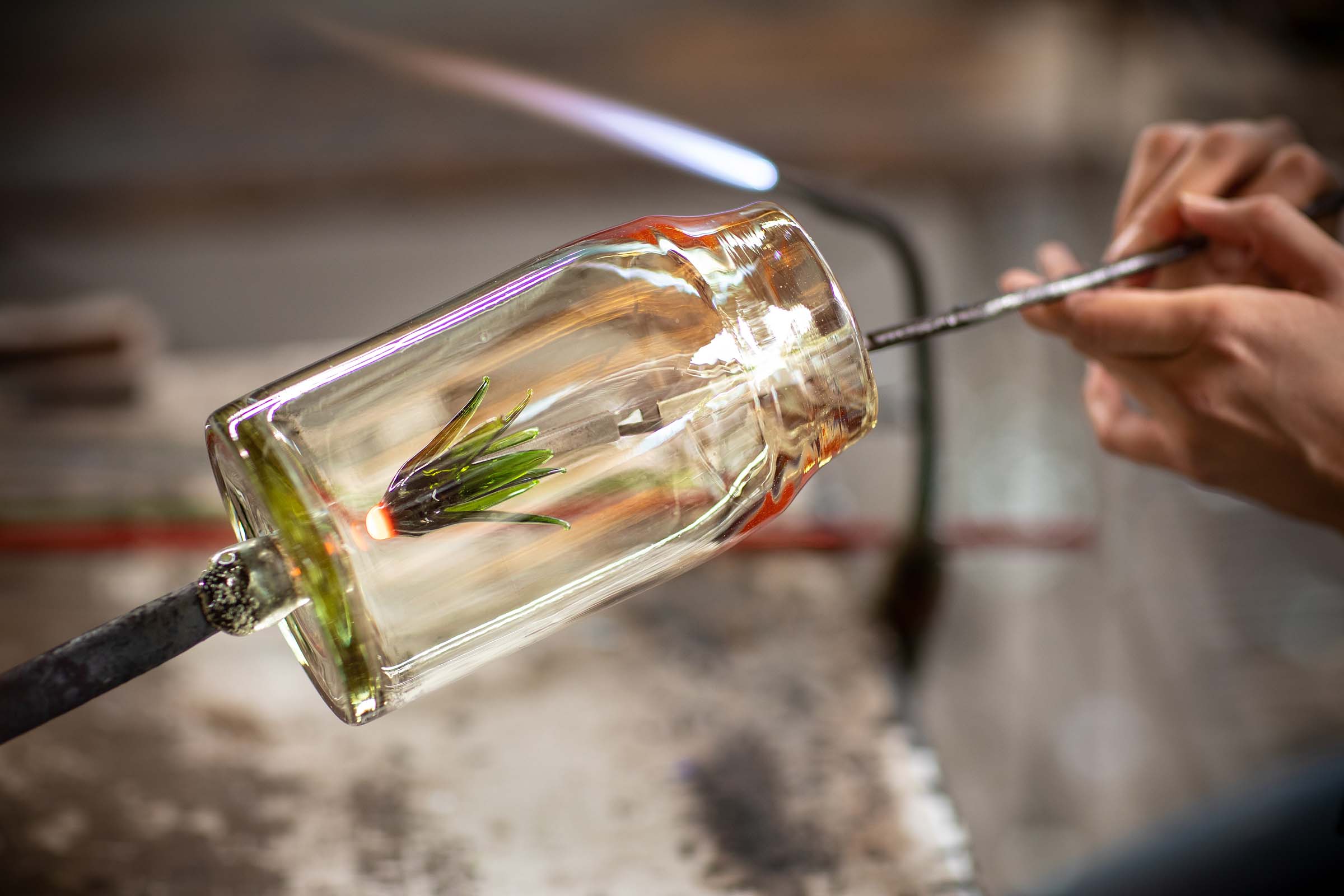
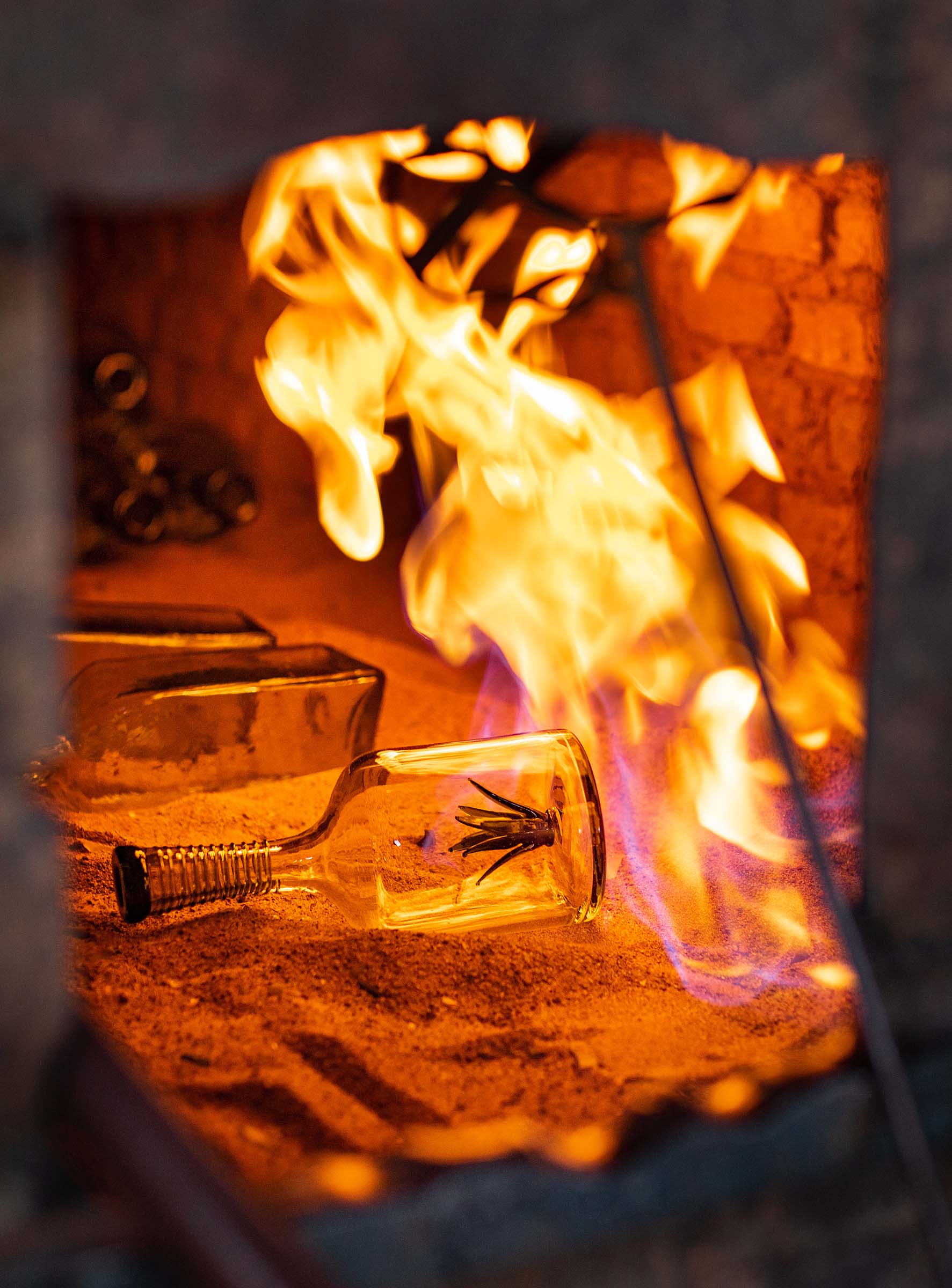
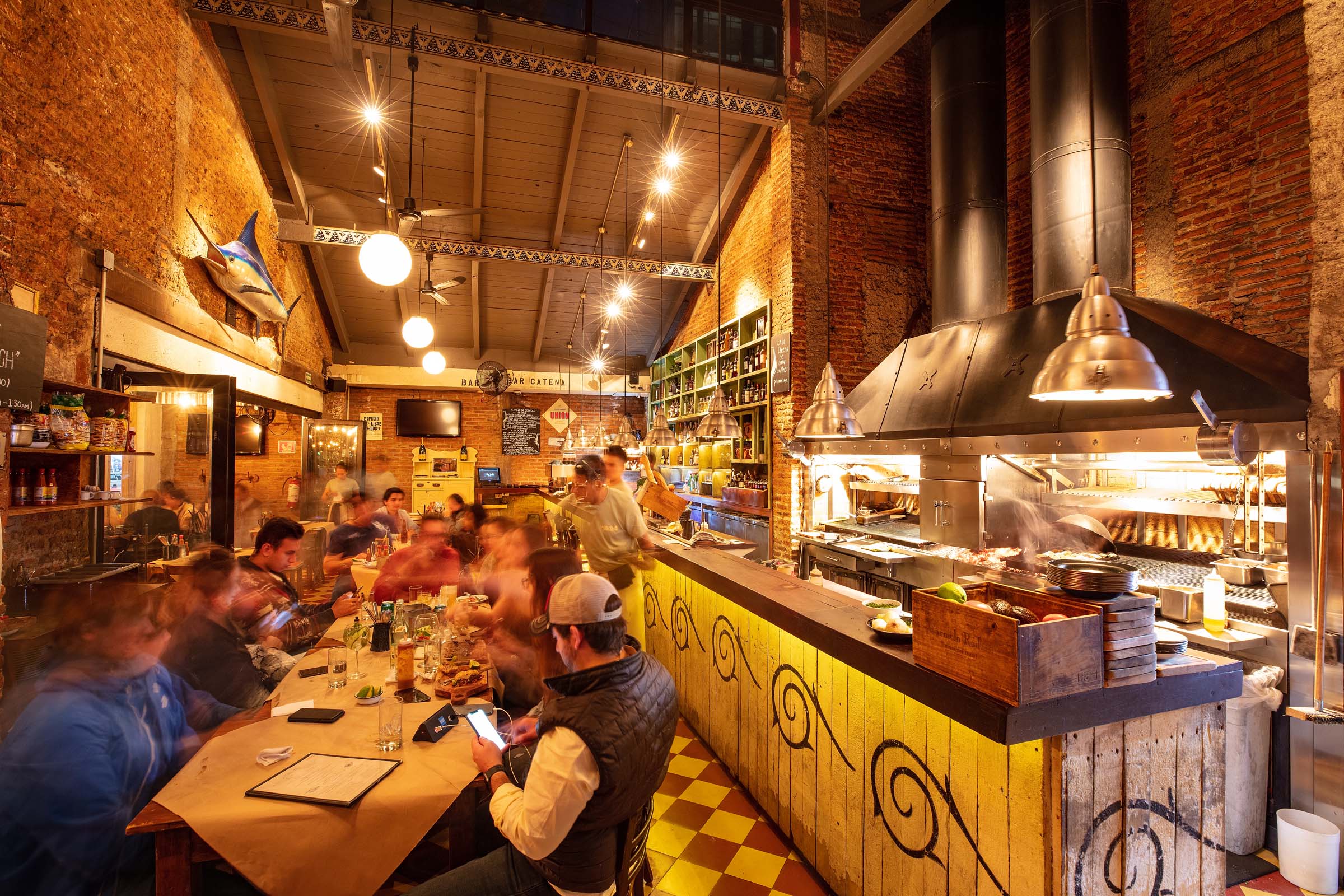
La Docena Oyster Bar, Guadalajara
Of course our journey would not be complete if we didn’t sample some of the many great restaurants and bars in Guadalajara and its surrounding cities and towns. Some we planned to feature prior to even arriving in Guadalajara while others were places that were introduced to us by locals with great culinary tastes.
One enjoyable place with exceptional food and atmosphere is the La Docena Oyster Bar and Grill. Built to look like a beach side structure this open air establishment offer a vast variety of fresh and grilled seafoods. Very easy to spend hours here enjoying the great food and pleasant ambience.
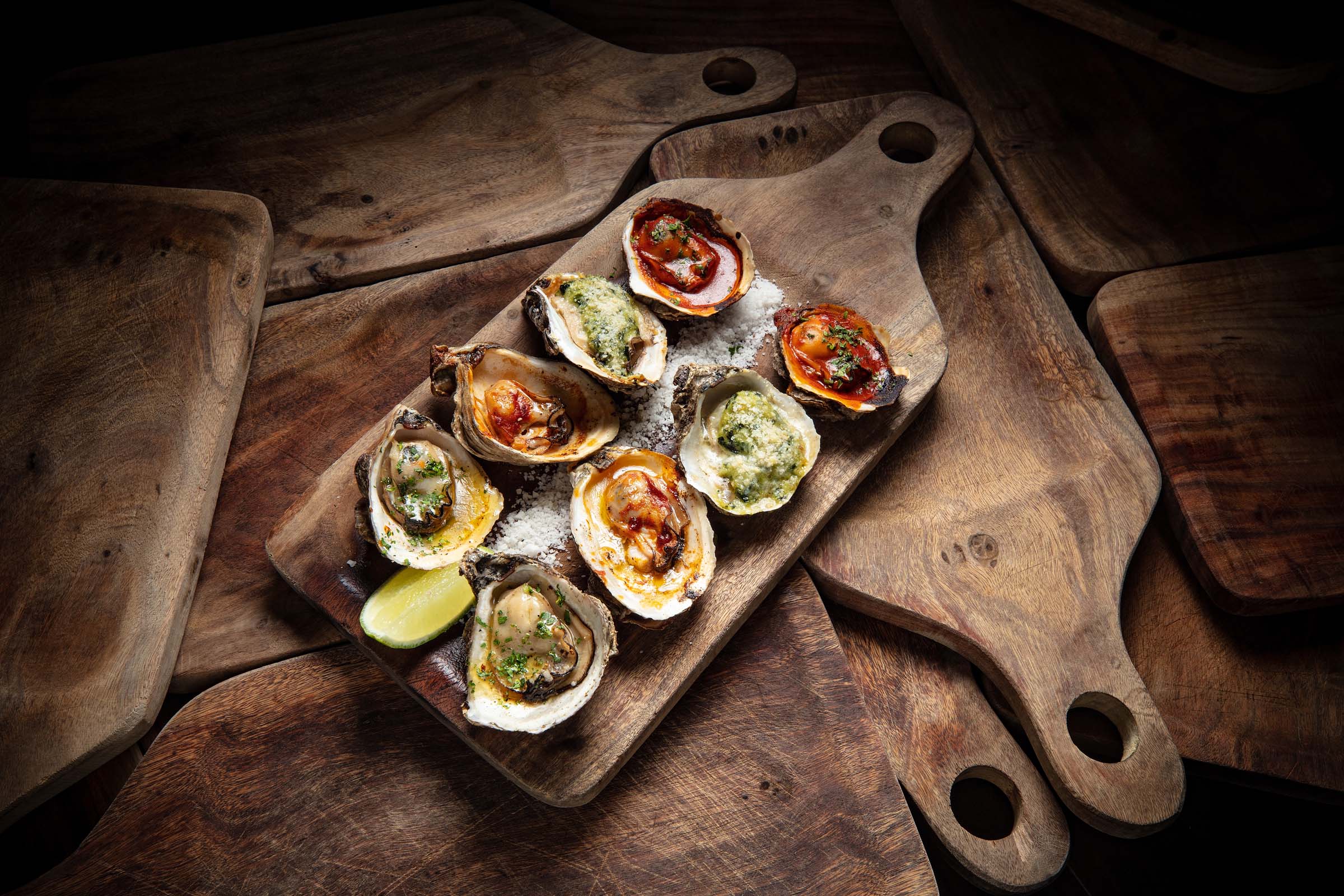
Oyster platter at La Docena Oyster Bar, Guadalajara
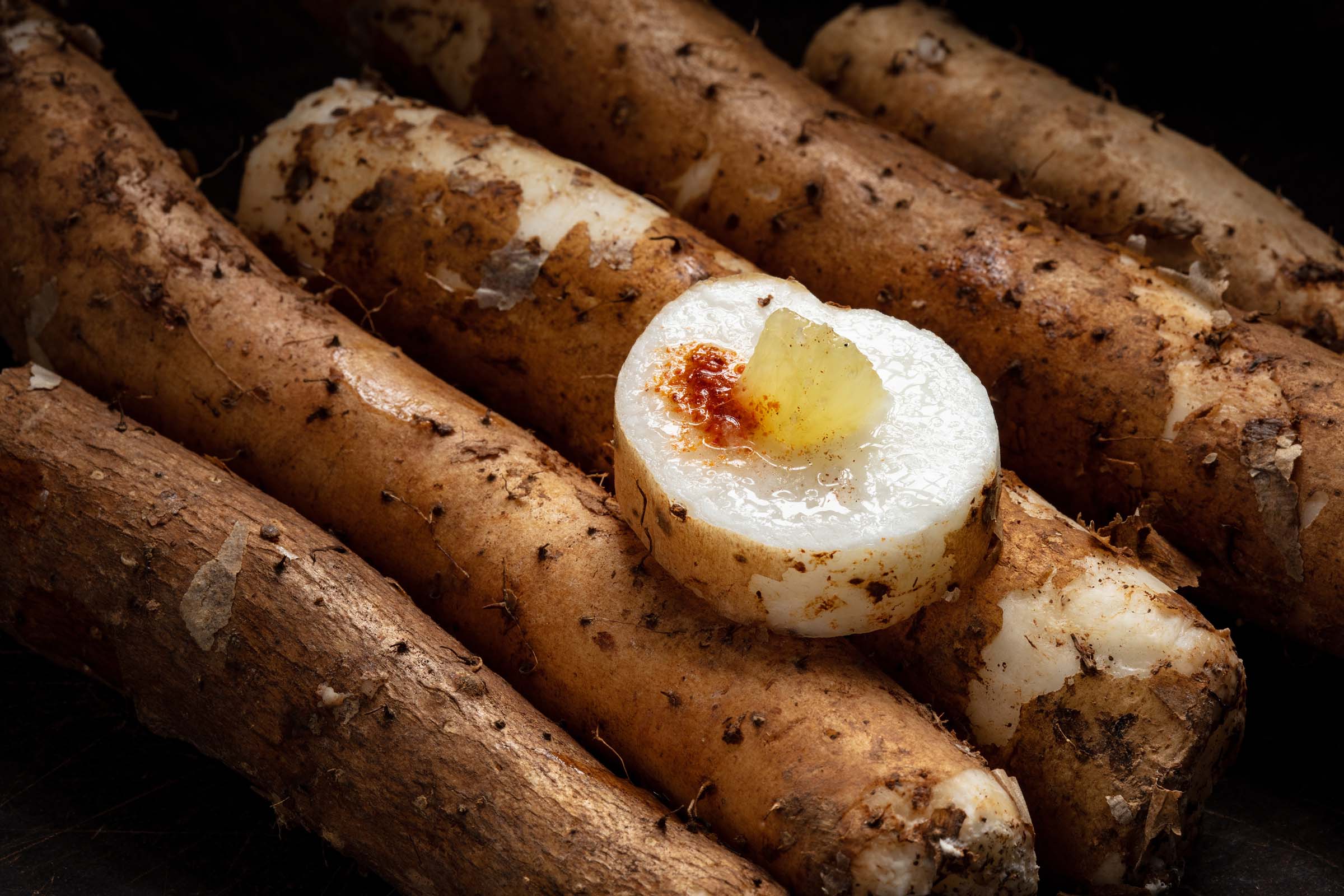
Alcalde restaurant, Guadalajara : Comote de Cerro – A wild hill potato, blanched then seasoned with lime, salt, and chilli.
Next on our list was Alcalde restaurant in Guadalajara. This highly acclaimed restaurant created by Chef Paco Ruano invites guests to enjoy the flavors of Jalisco as they are prepared and plated with great care and detail.

Chef Paco Ruano
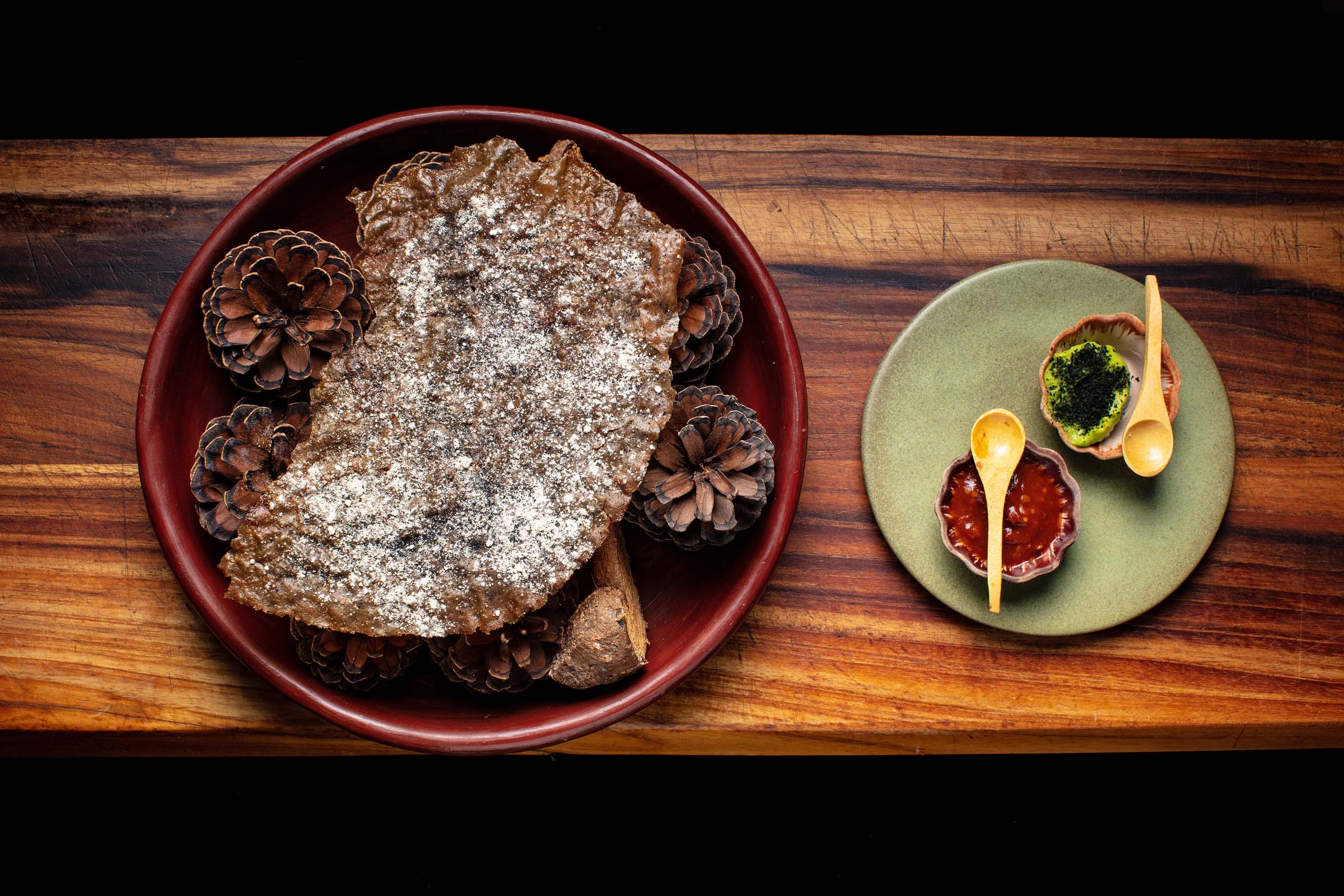
Acalde : Cecina with Guacamole and Chilpete Chili Sauce
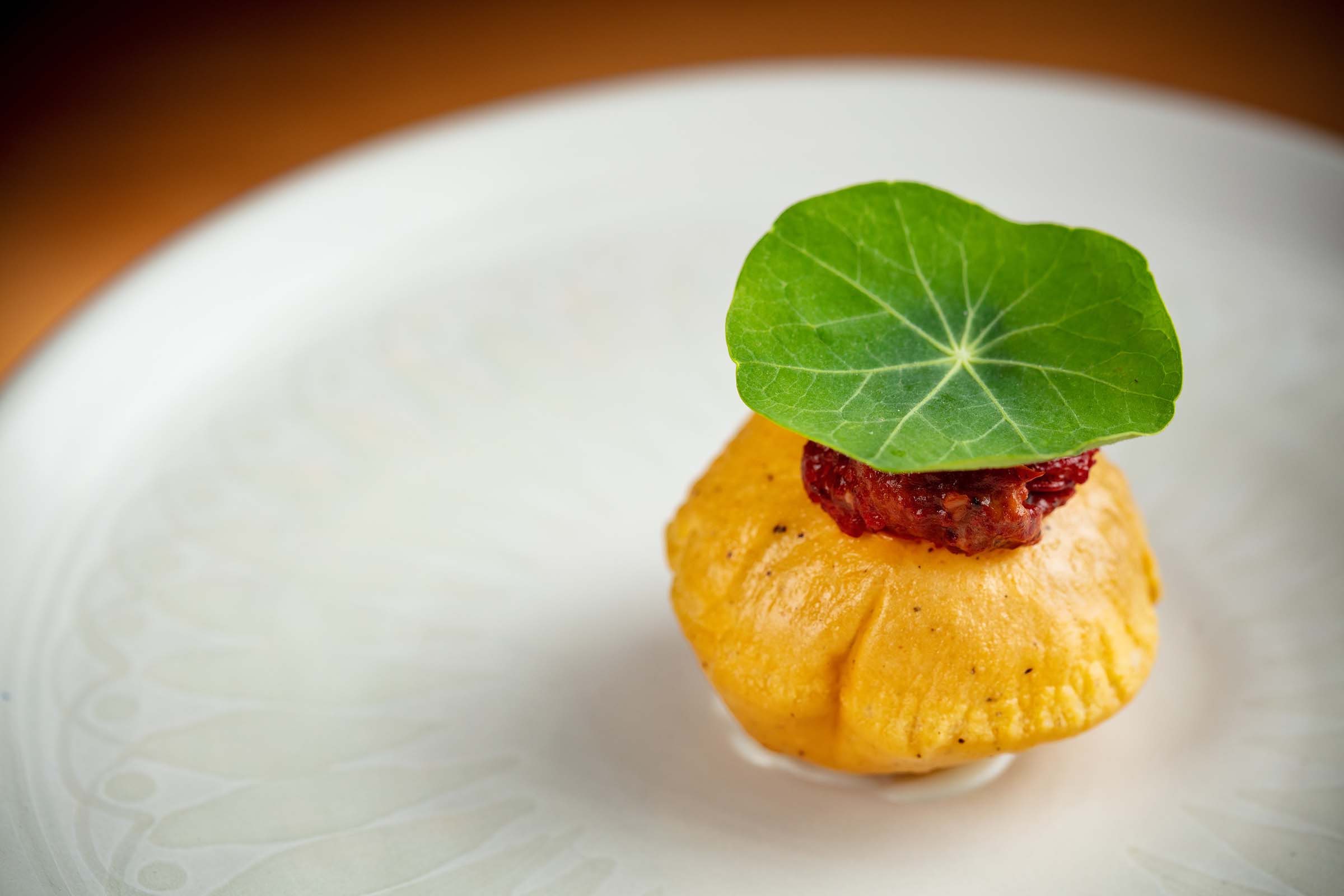
Alcalde : Acociles al Ajillo – Yucatan salbute, a puffed-out deep fried tortilla, with spicy condiment of tiny river shrimp stewed with garlic, butter, lime, salt, and then topped off with a peppery nasturtium leaf
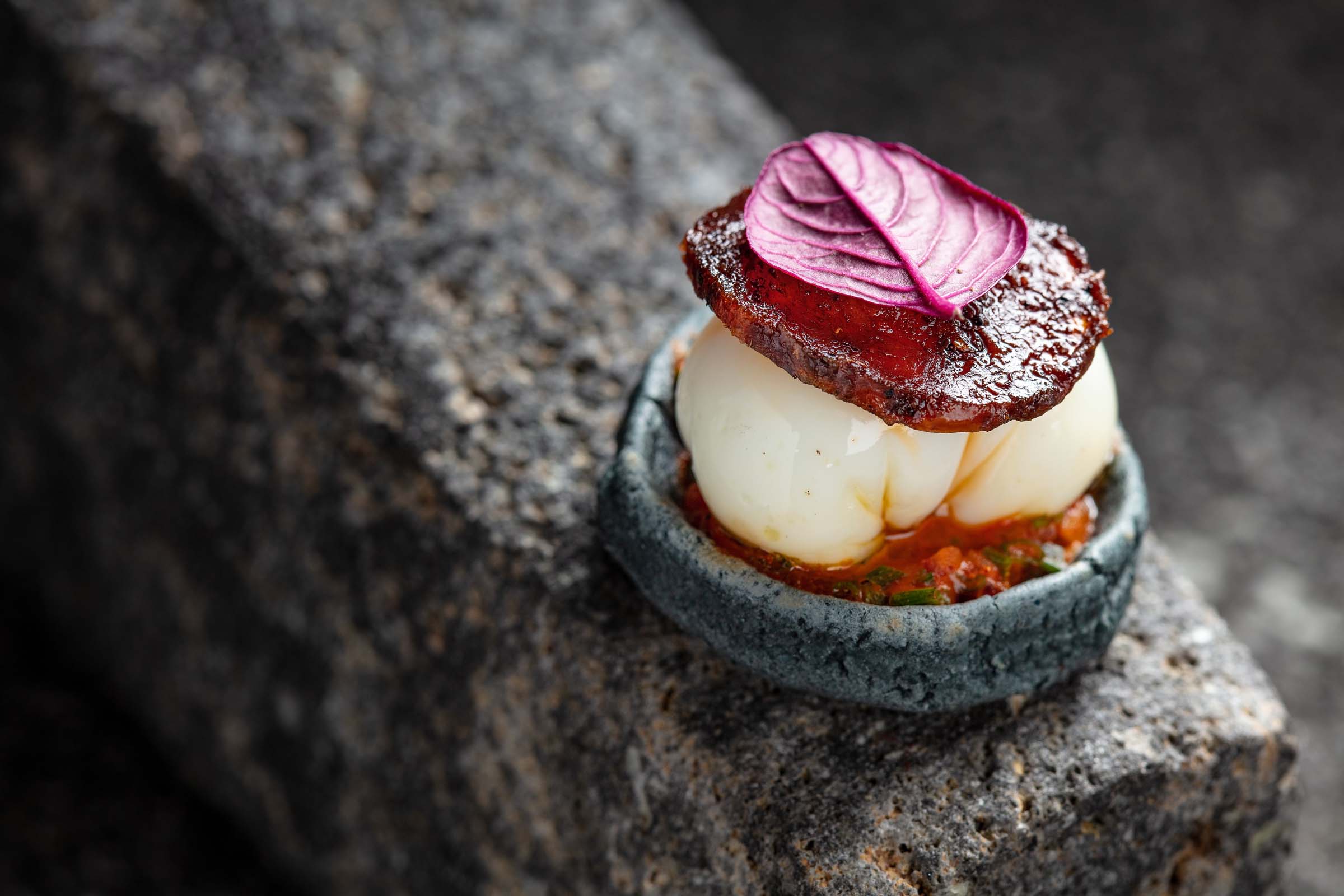
Alcalde restaurant: Chorizo and Egg – Chef Ruano’s take on a classic Mexican breakfast featuring a bite-sized blue corn sope, a thick corn tortilla which holds a chorizo sauce and poached quail egg, topped with a slice of dried chorizo and an amaranth leaf.
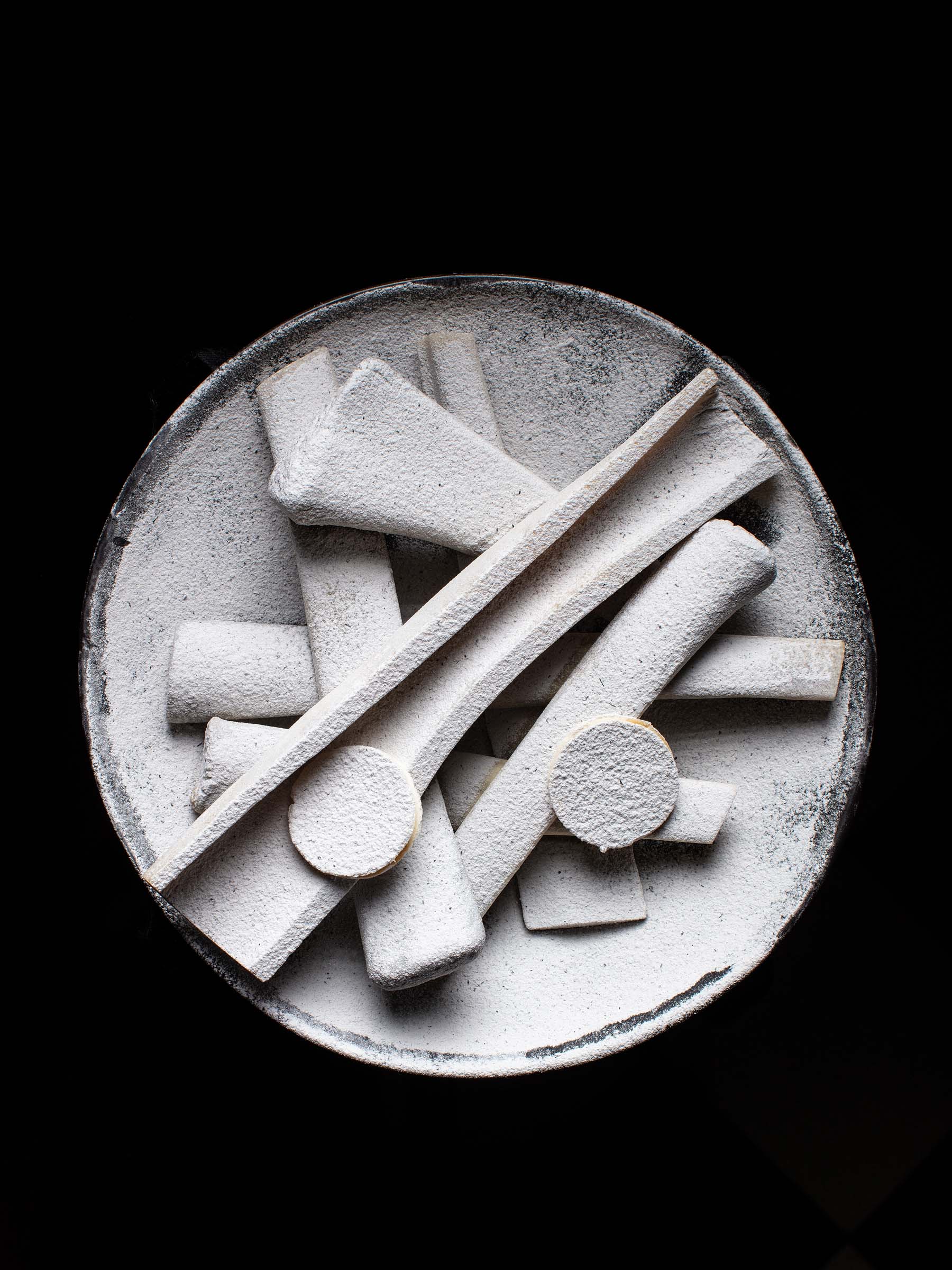
Alcalde : Bone Marrow Cajeta – Chef Ruano blends smoked bone marrow with cajeta and spreads it between two light wafers. The plating represents the barbecue tradition of an asado, with real bones and edible ash made from charred rib eye fat and sugar.
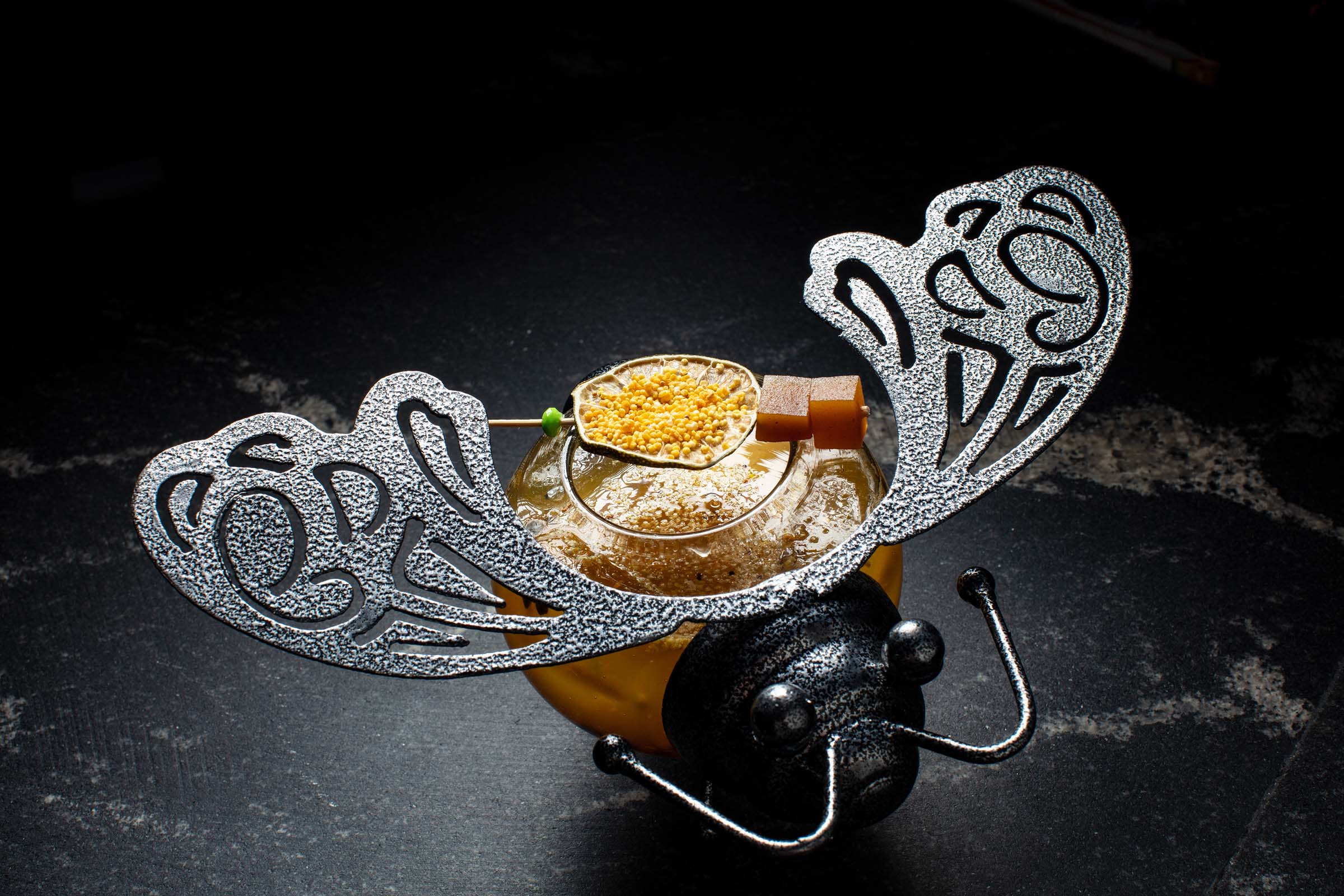
Casa Luna Bar and Restaurant, Tlaquepaque: A cocktail called “Talpa” made with freash guava juice, Patron Reposado and Patron XO Cafe
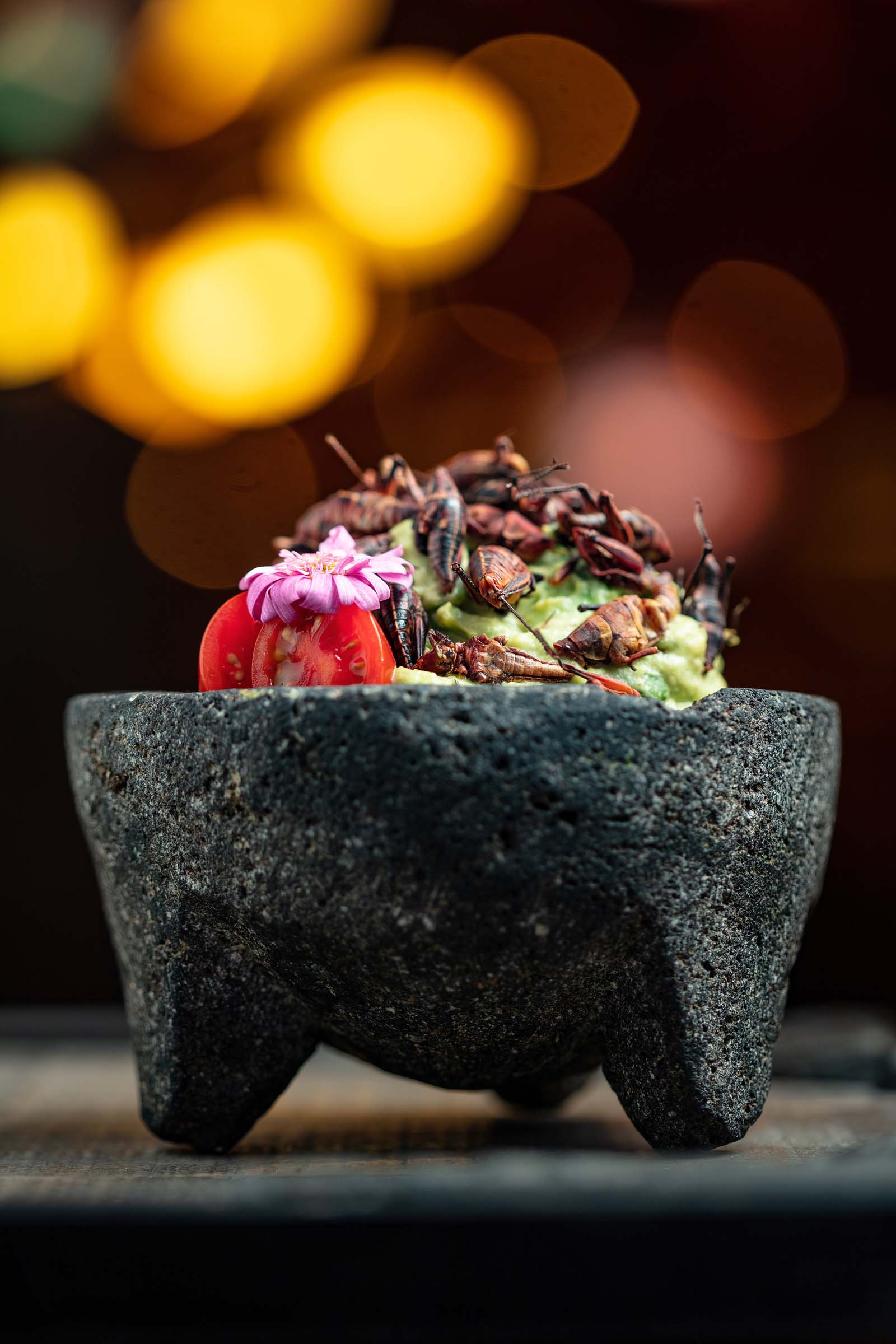
Casa Luna: Chapulines – Toasted grasshoppers in garlic, lime juice, and salt on top of a freshly made molcajete of guacamole.
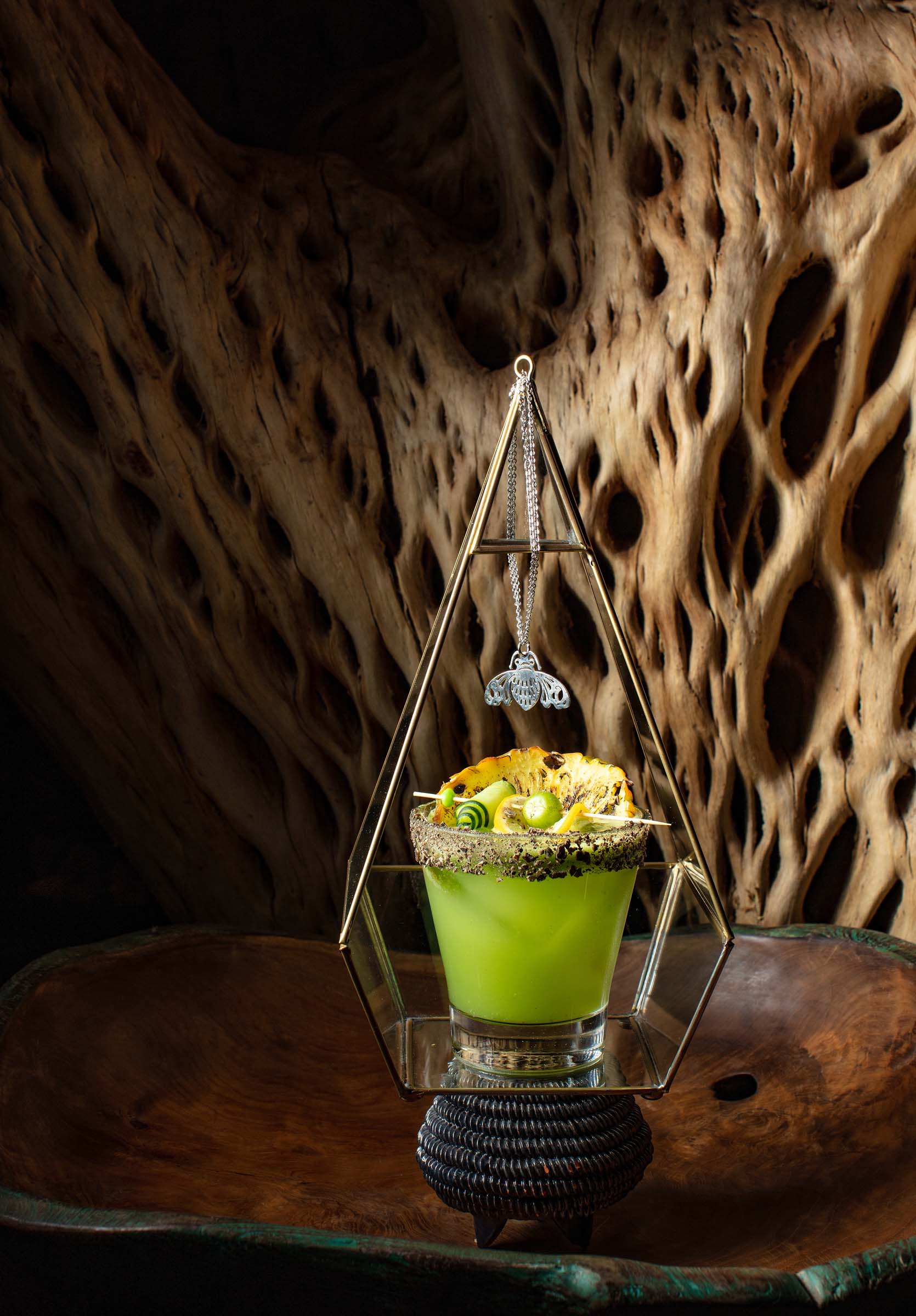
Casa Luna: “Milpero” – A tequila based cocktail made with Patron Silver, pineapple juice, milpero juice, celery bitters, and cascabel pepper and served in a glass lined with tortilla salt
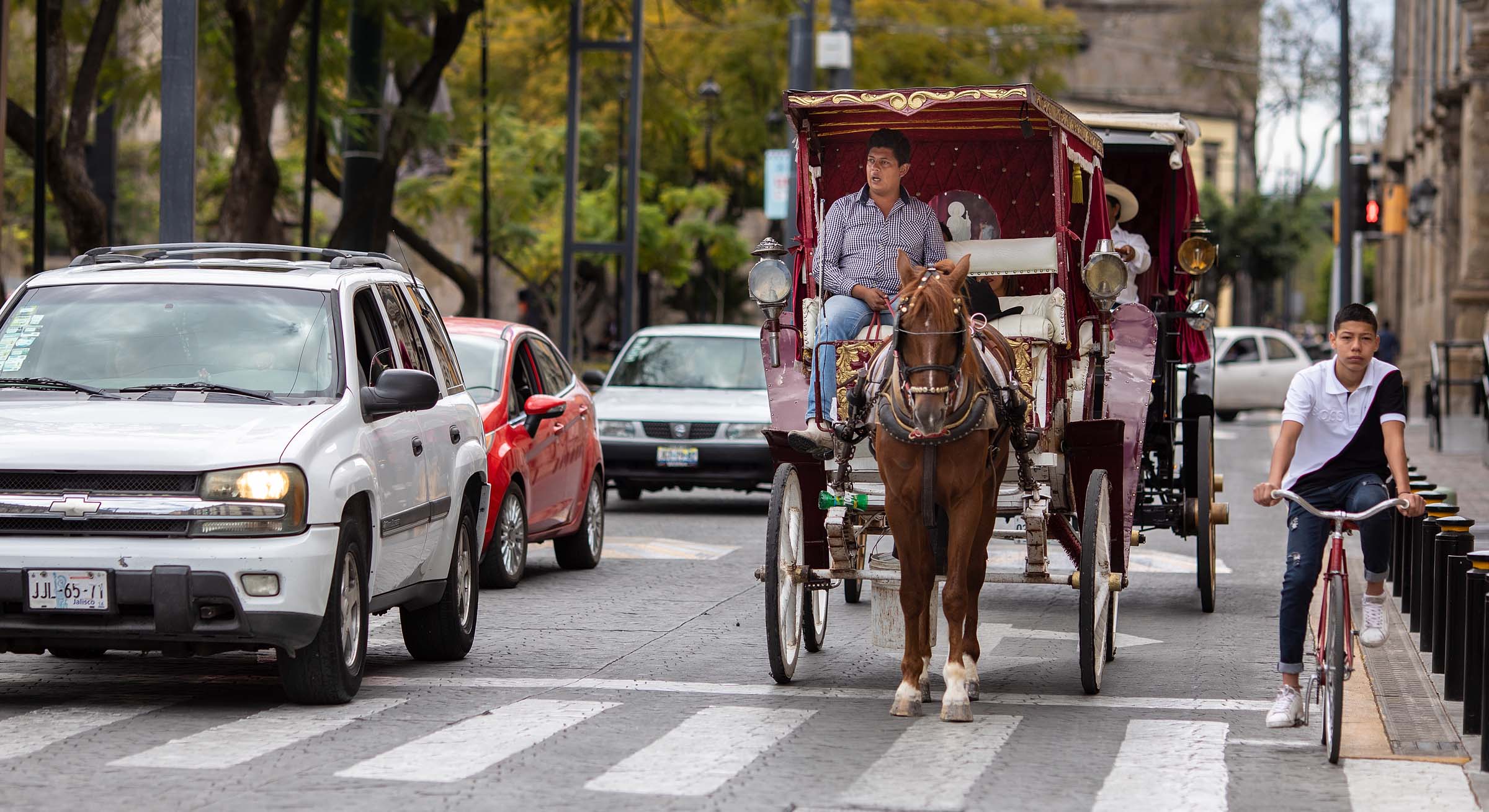
Lots of ways to get around downtown Guadalajara
Back in Guadalajara for a final couple of days I was able to just wander the downtown area. One of the pleasures of being in Latin American countries is how the town squares become such a focus for the community. Families, couples, singles, and kids all seem to enjoy being out and surrounded by their fellow citizens. In the cathedral I see a wedding in progress while kids wait in a classic car for the couple to emerge while in another part of the square is a father enjoying snapping photos of his family while keeping one of his kids balanced safely on his shoulders. And as day turns to night a horse-drawn carriage driver waits for a customer.
Such a pleasant place to spend a day, a week, or a lifetime. Can’t wait to return.
